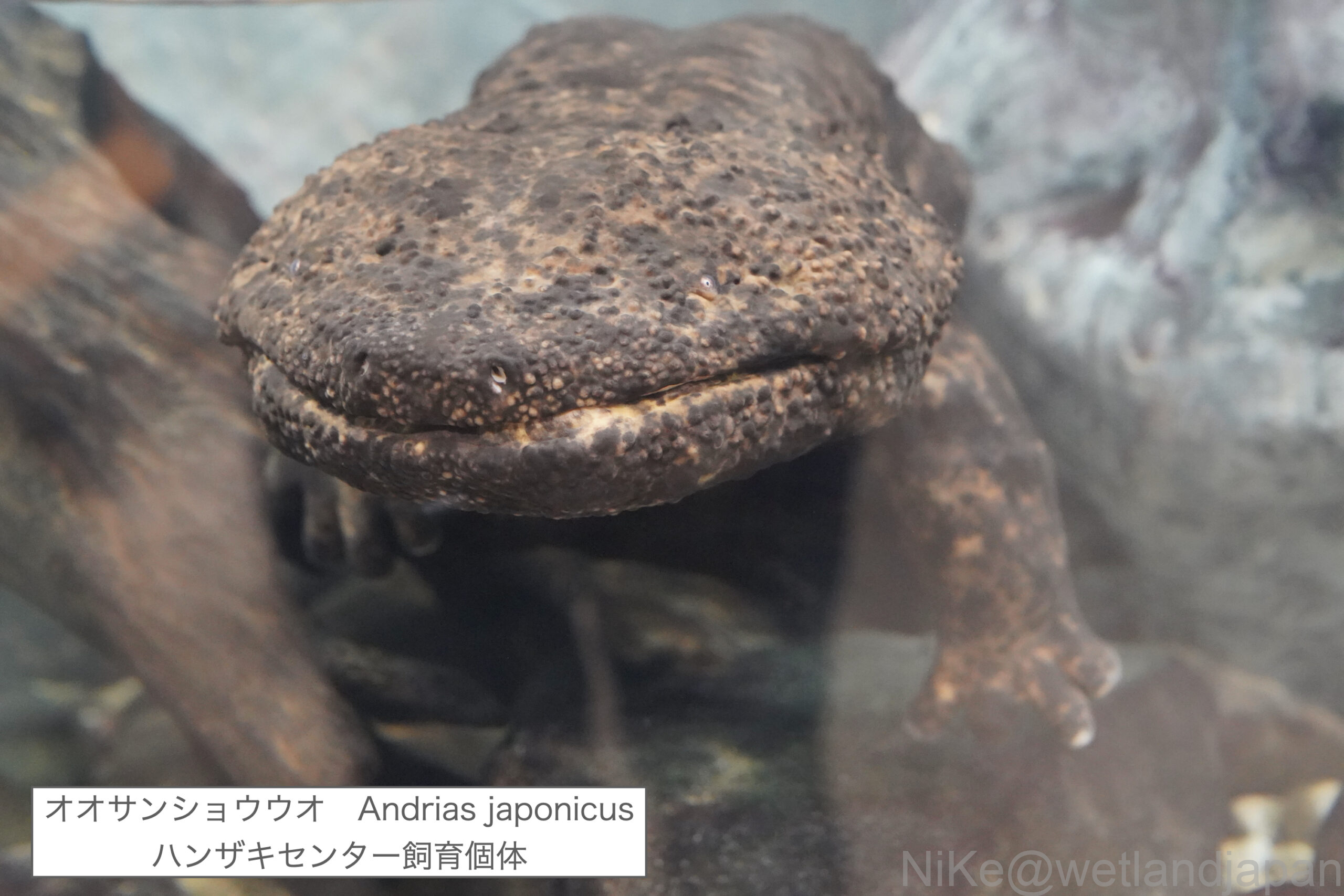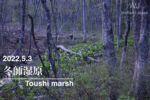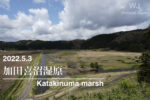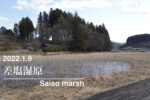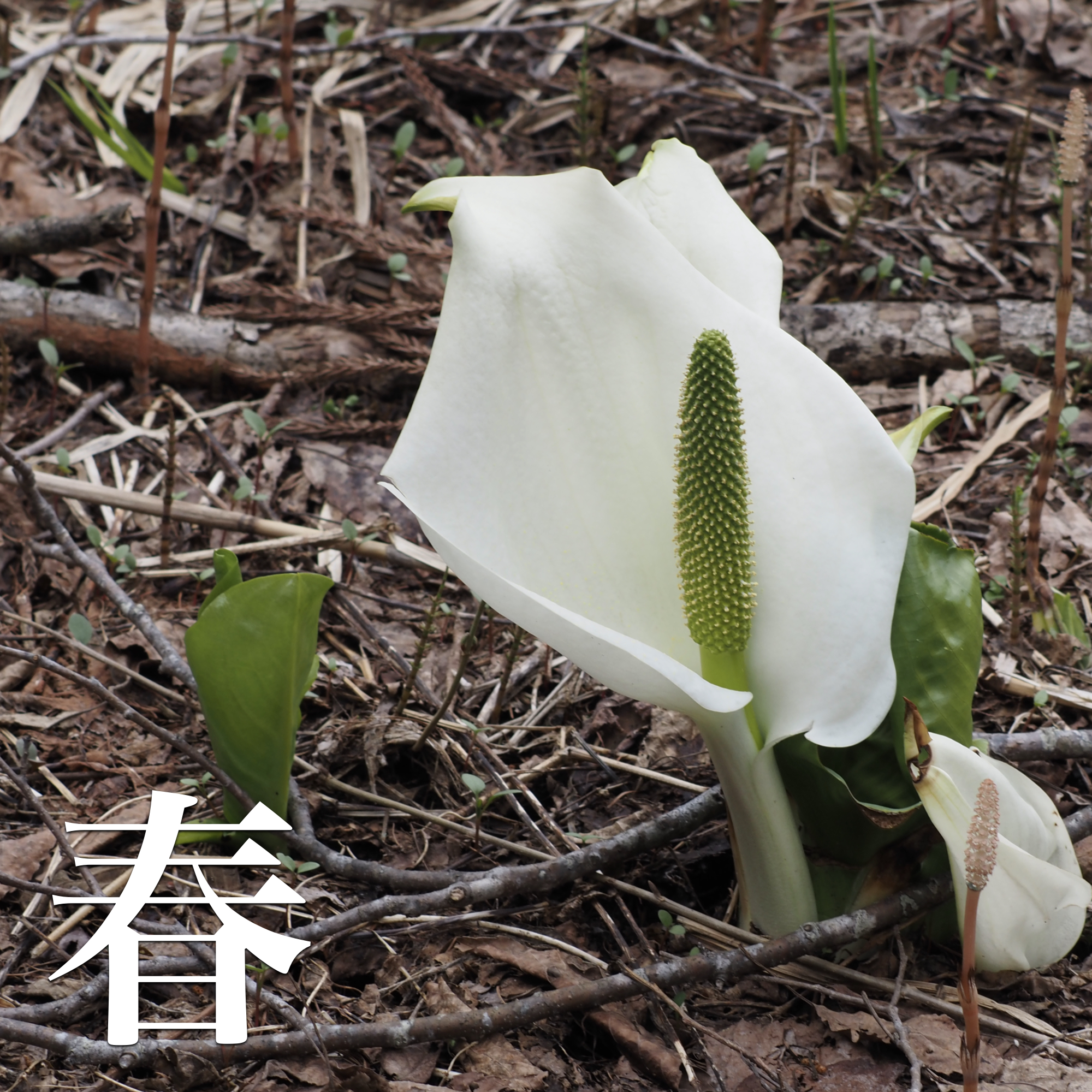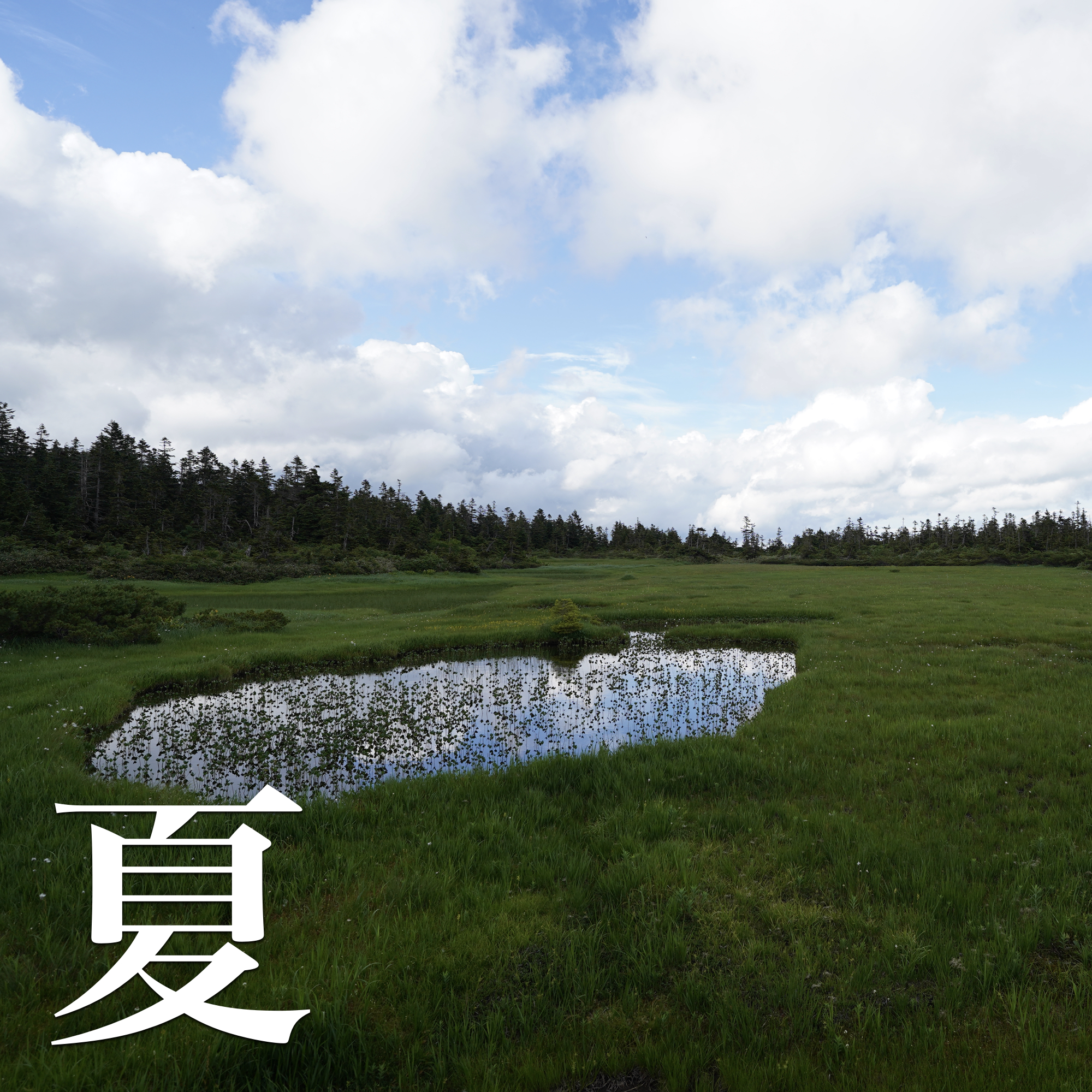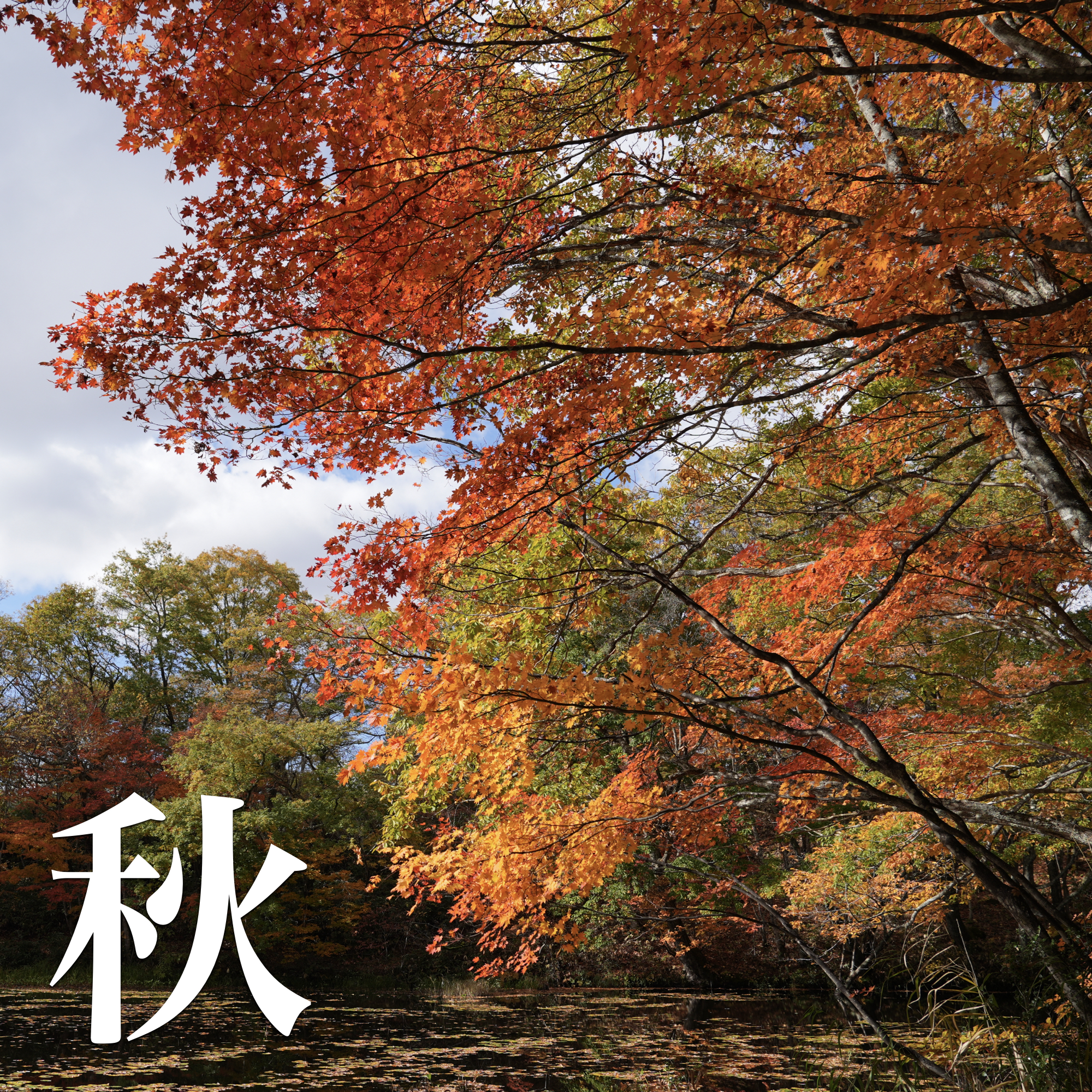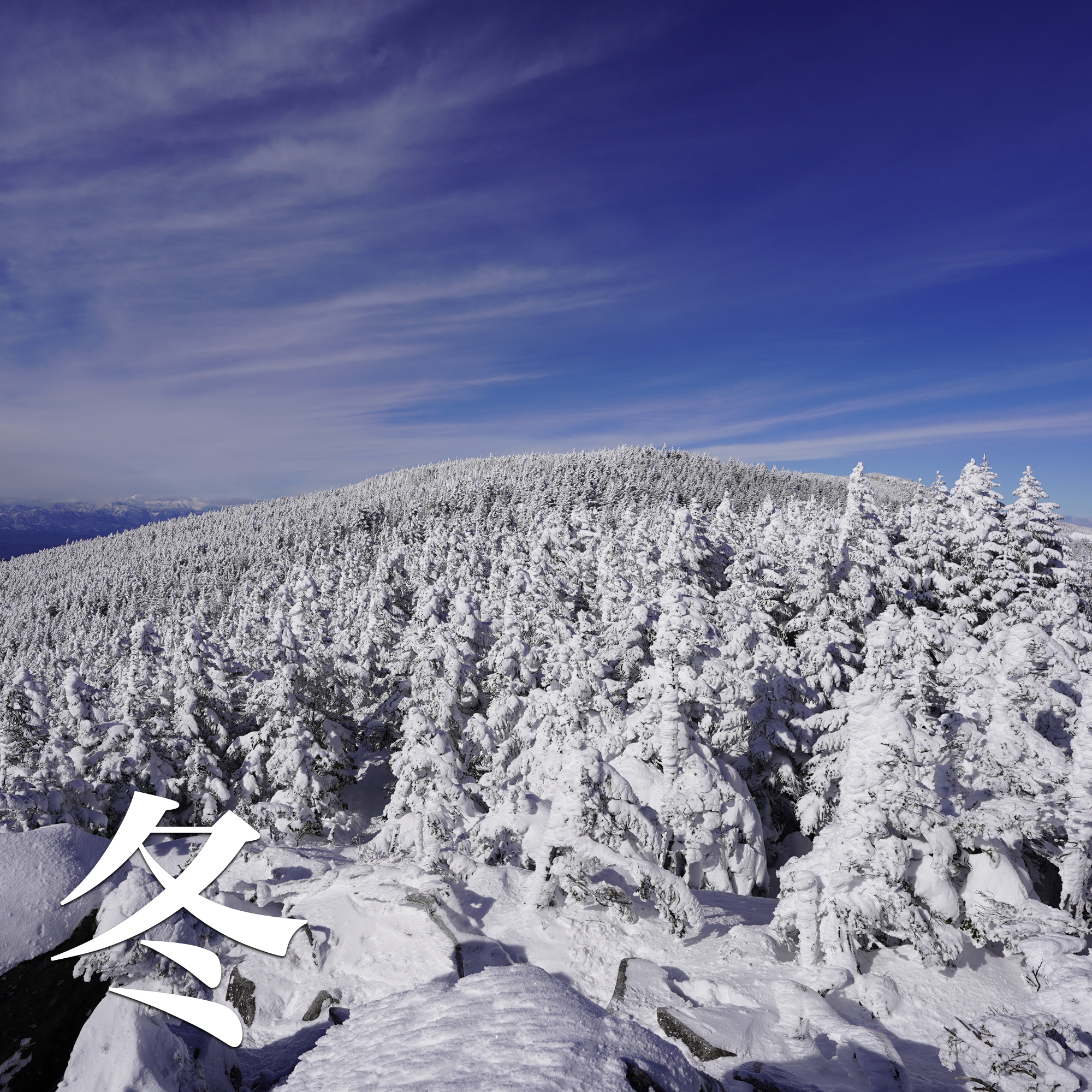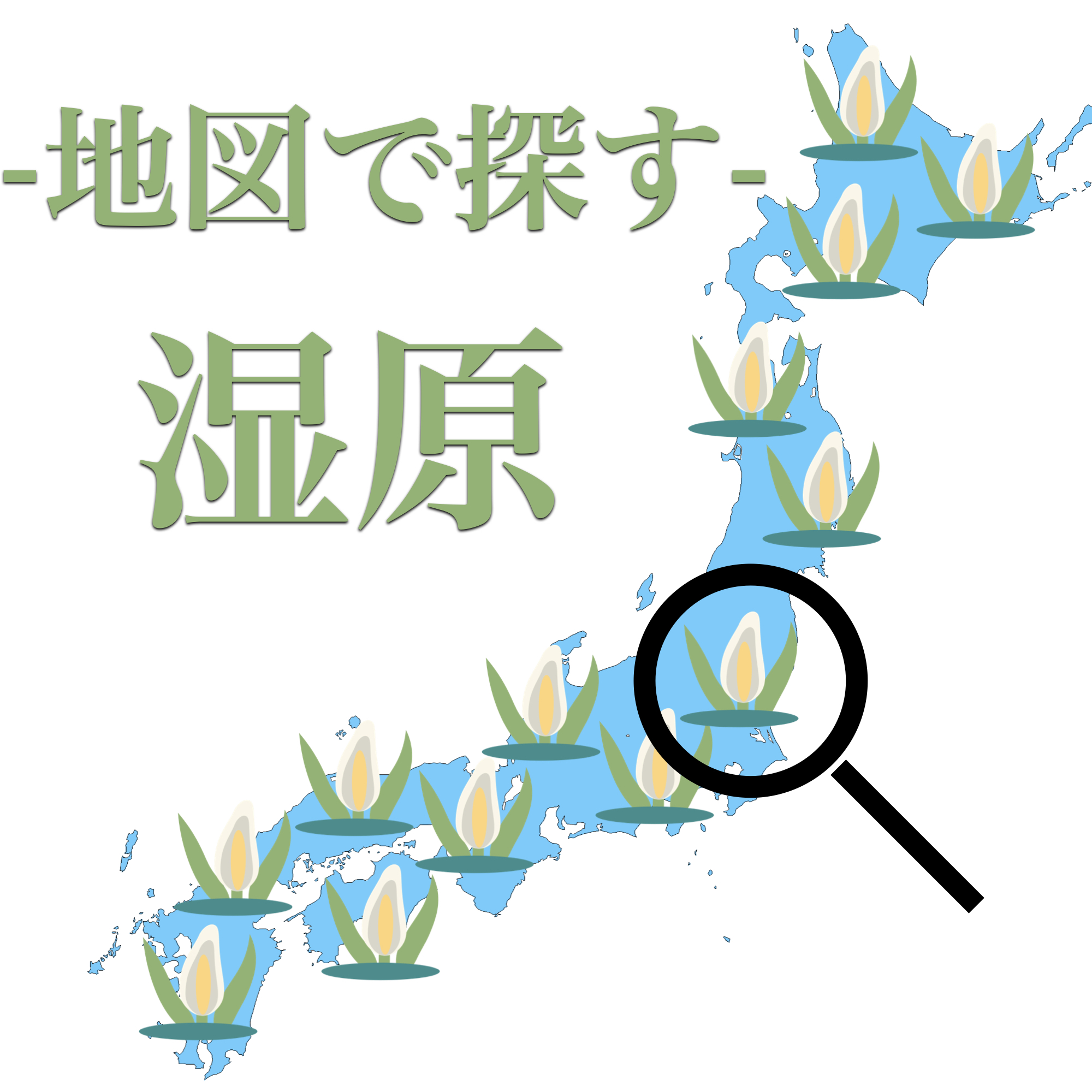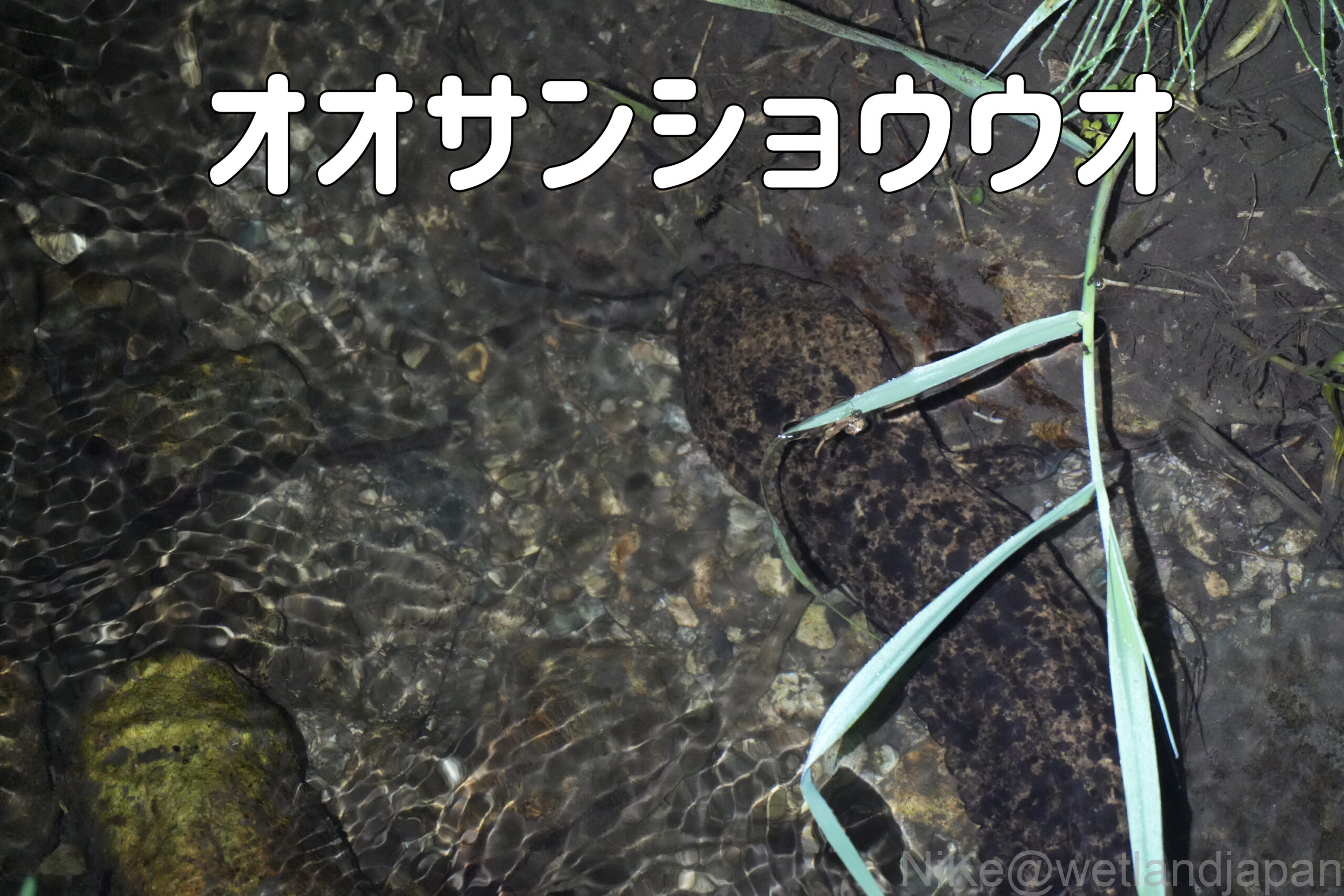
The giant salamander is Japan's largest amphibian.
This popular creature is unlike any other amphibian because of its enormous size.
table of contents
What is a giant salamander?
Japan's largest amphibian, found in western Japan.
It can grow to a maximum of 150 cm, but in the wild it is only about 50-70 cm.
Either way, there is no doubt that it is the largest amphibian in Japan.
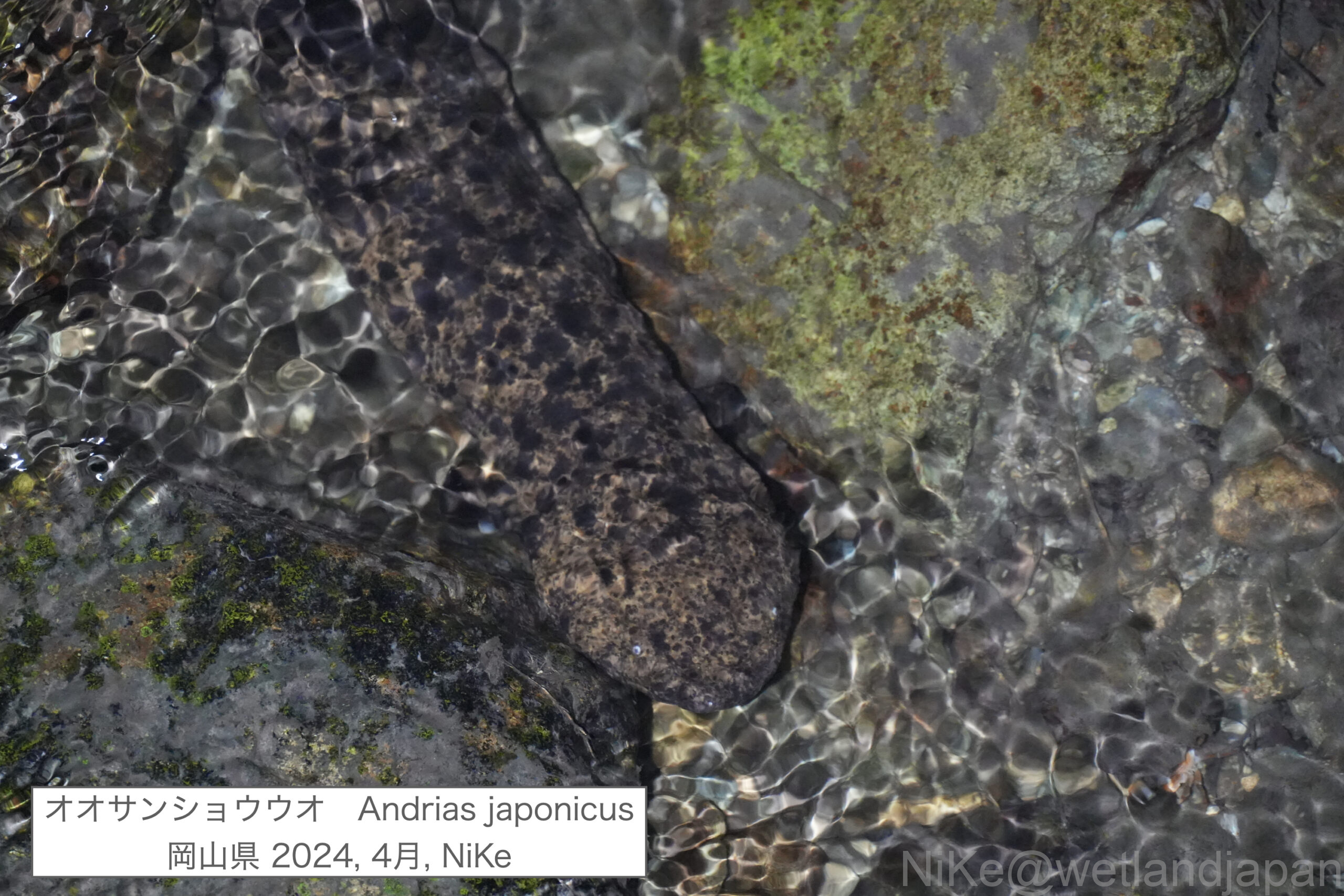
They are entirely aquatic and live in the upper reaches of rivers.
The population of native species is declining due to habitat loss and hybridization with the Chinese giant salamander.
Currently, it has been designated a Special Natural Monument, and even touching it without permission is forbidden.
Living Fossils
The giant salamander has hardly changed in appearance for the past 30 million years.
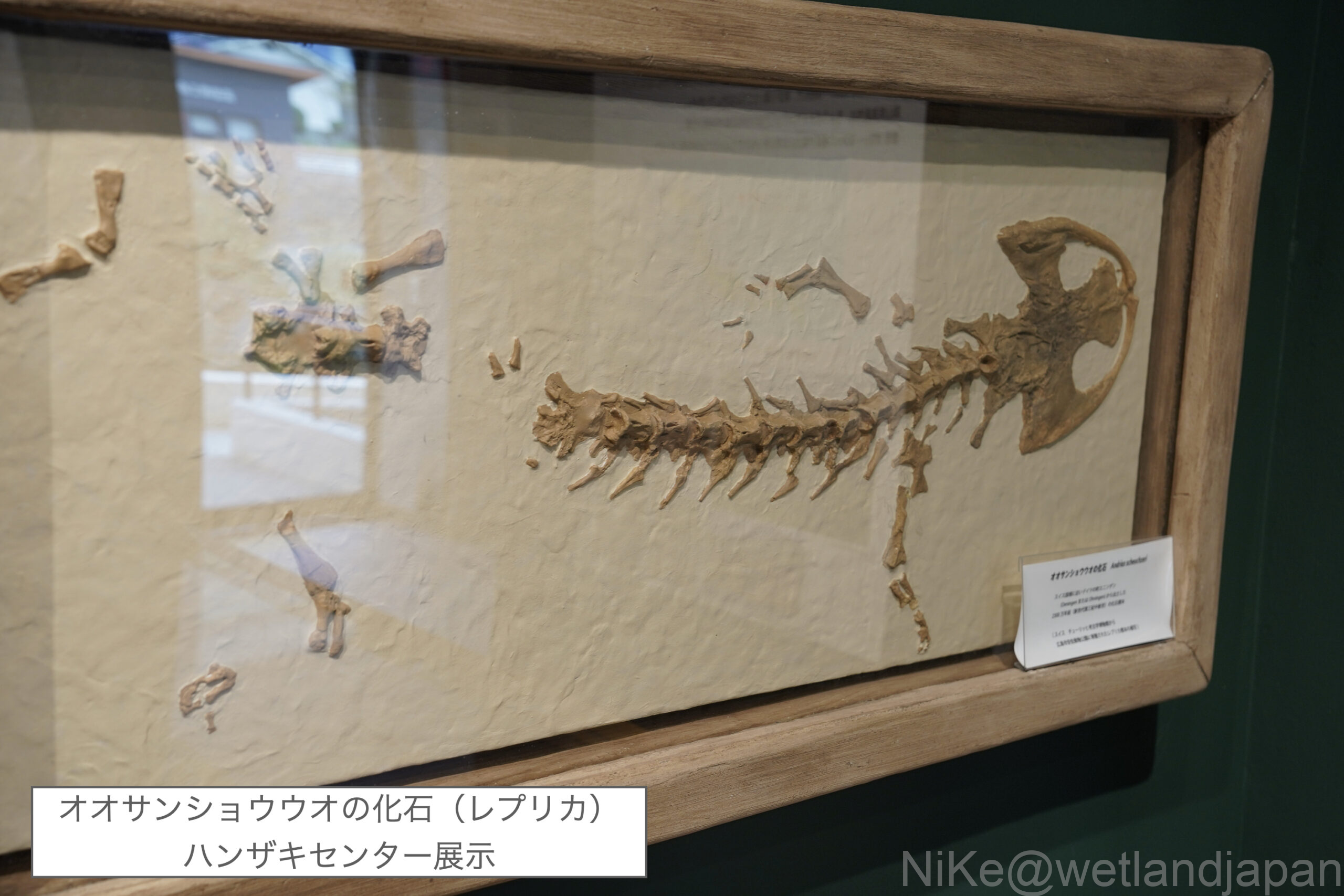
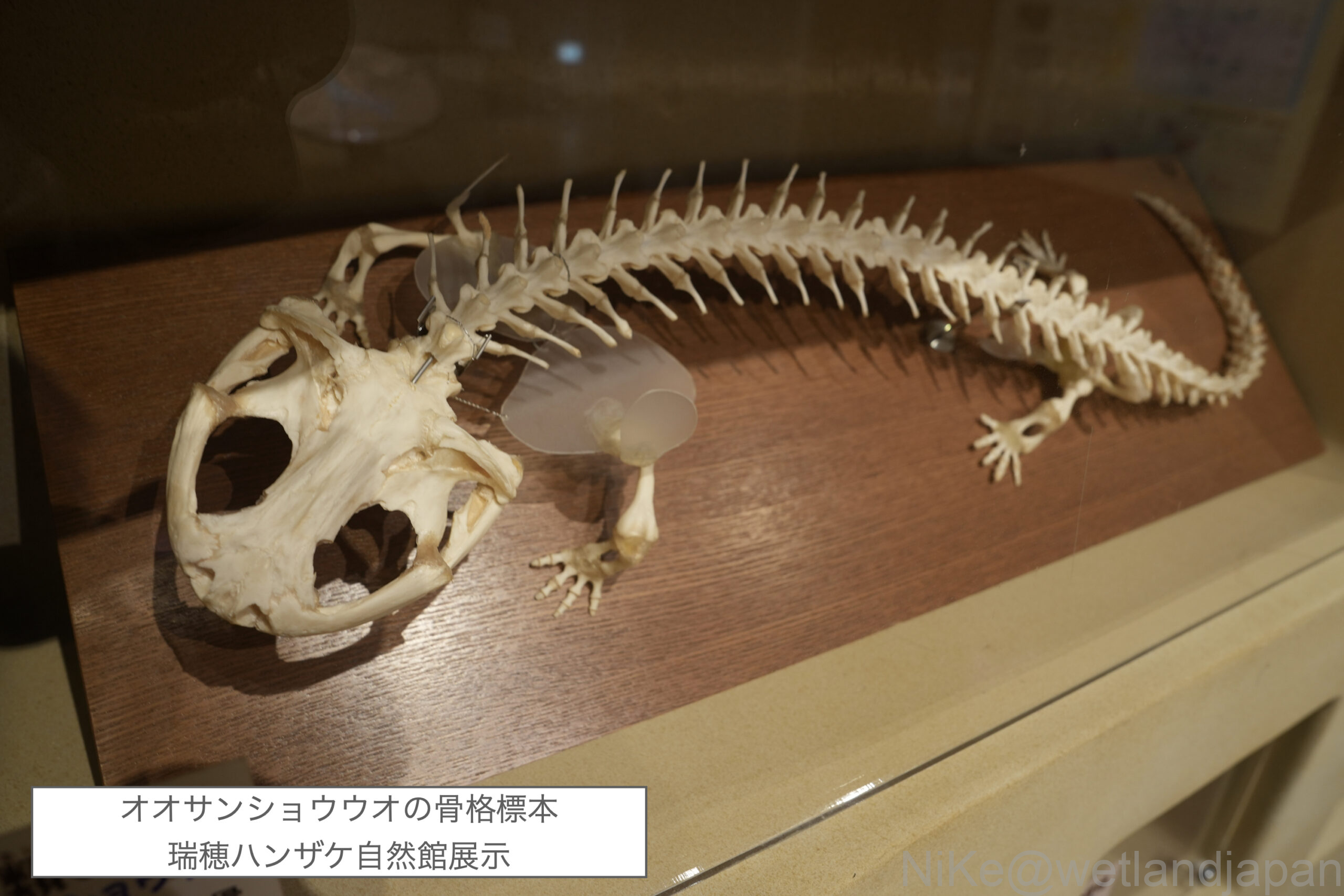
When comparing a 23-million-year-old fossil with a modern skeletal specimen, to the untrained eye it is nearly indistinguishable.
This is why it is called a living fossil.
The journey to filming (April 2024)
The giant salamander is Japan's largest amphibian.
It is a creature I have seen several times at places like Ueno Zoo and the Hanzaki Nature Museum.
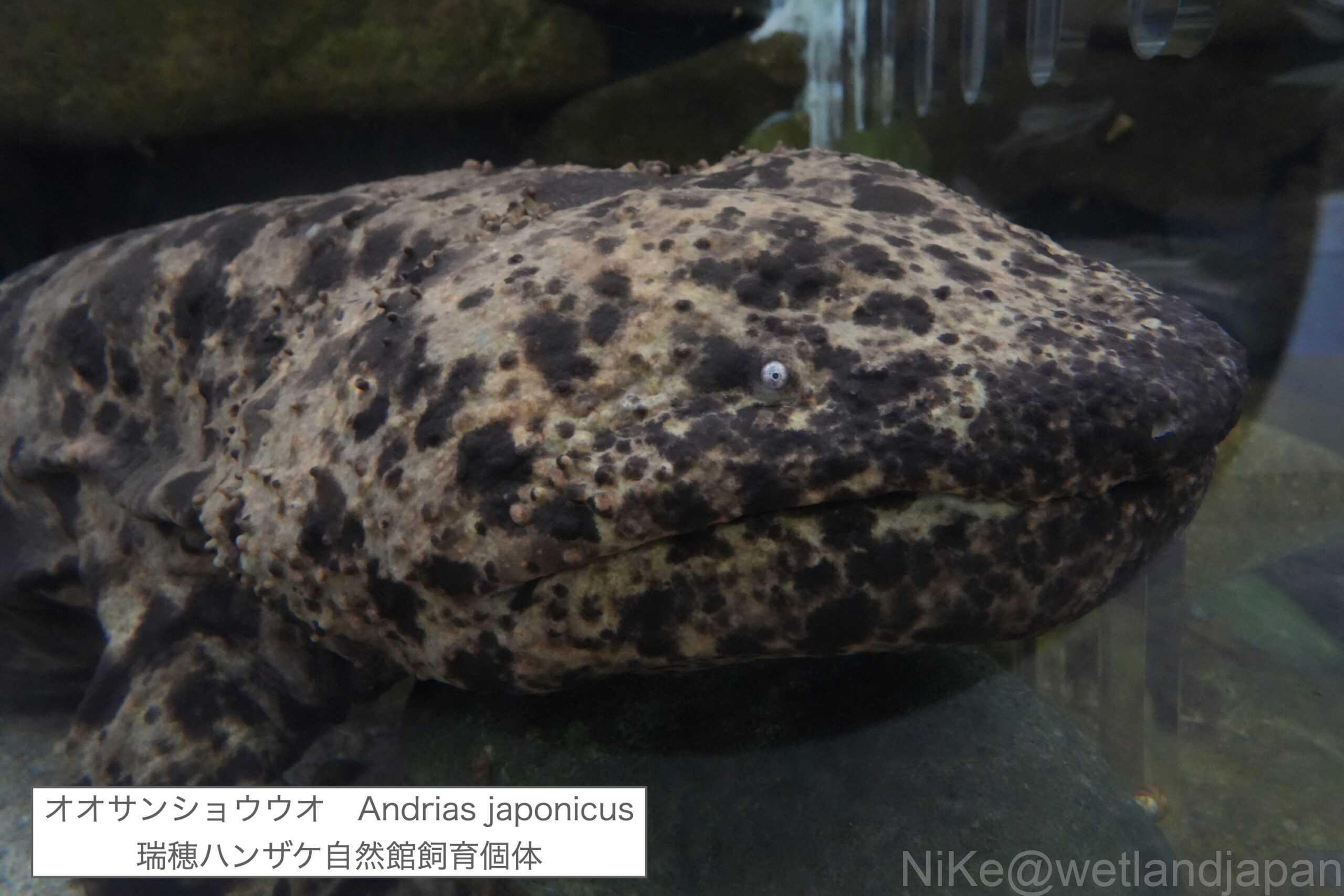
However, no matter how many specimens I see on display, I still can't get a sense of them.
Do amphibians this large really live in Japan?
So I drove from Tokyo to Okayama to look for giant salamanders.
If we were to only consider the discovery of the giant salamander, Kyoto would have had a high batting average, but it seems that hybridization with the Chinese giant salamander is becoming an issue.
I wanted to see some of Japan's endemic species, so I decided on Okayama.
Yubara City in Okayama Prefecture is a habitat for giant salamanders and has been designated a national natural monument.
Looking at the reports, we found that the research team had actually discovered and observed giant salamanders in several rivers.
If you have never seen a creature in the wild, it makes sense to look for it in the places where it has been found.
So I decided to stay at a hotel in Yubara Onsen town and search for giant salamanders while enjoying the hot springs.
Yubara Town is a habitat for giant salamanders and has been designated a national natural monument.
For this reason, Yubara Onsenkyo is developing the town with giant salamanders as a major focus.
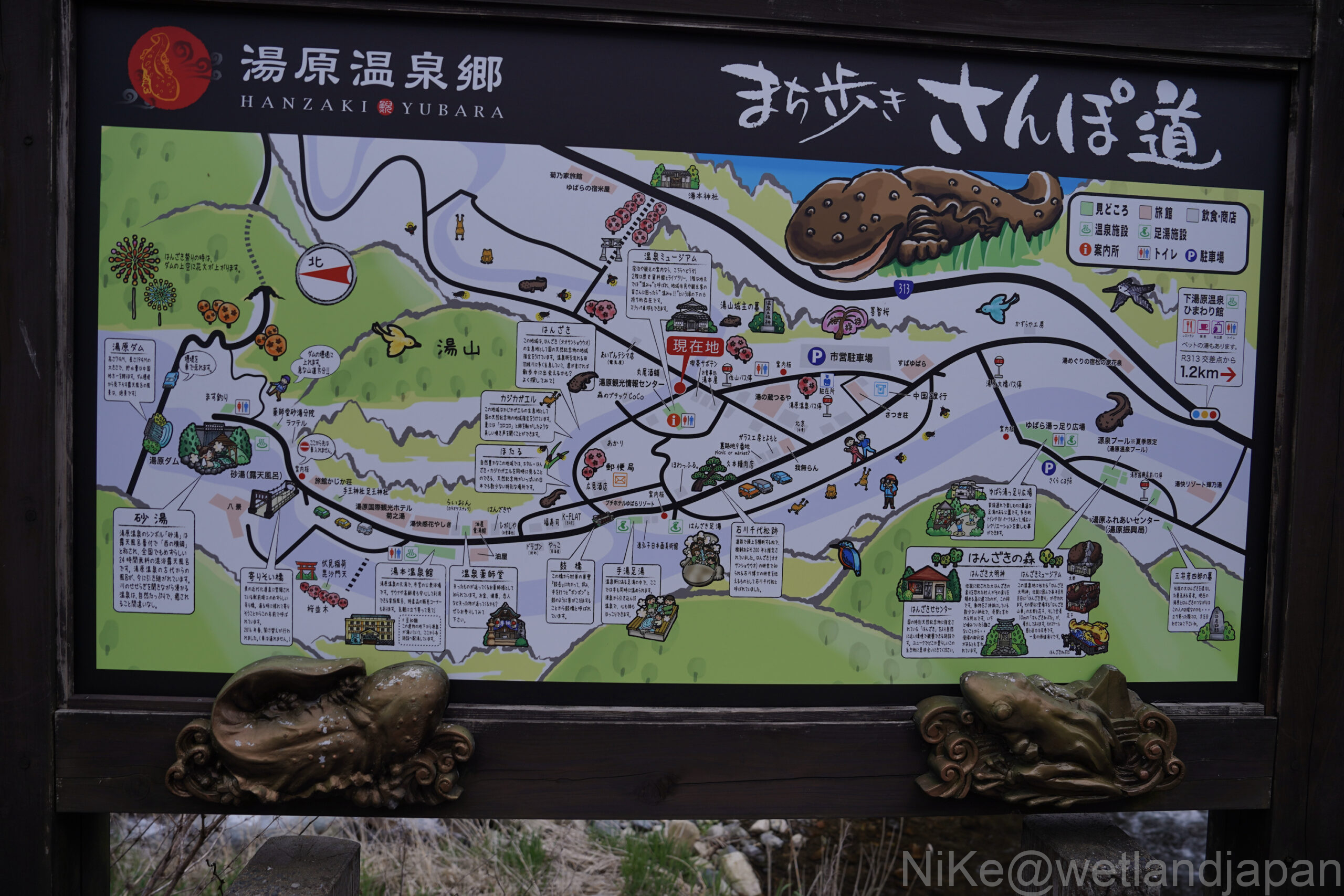
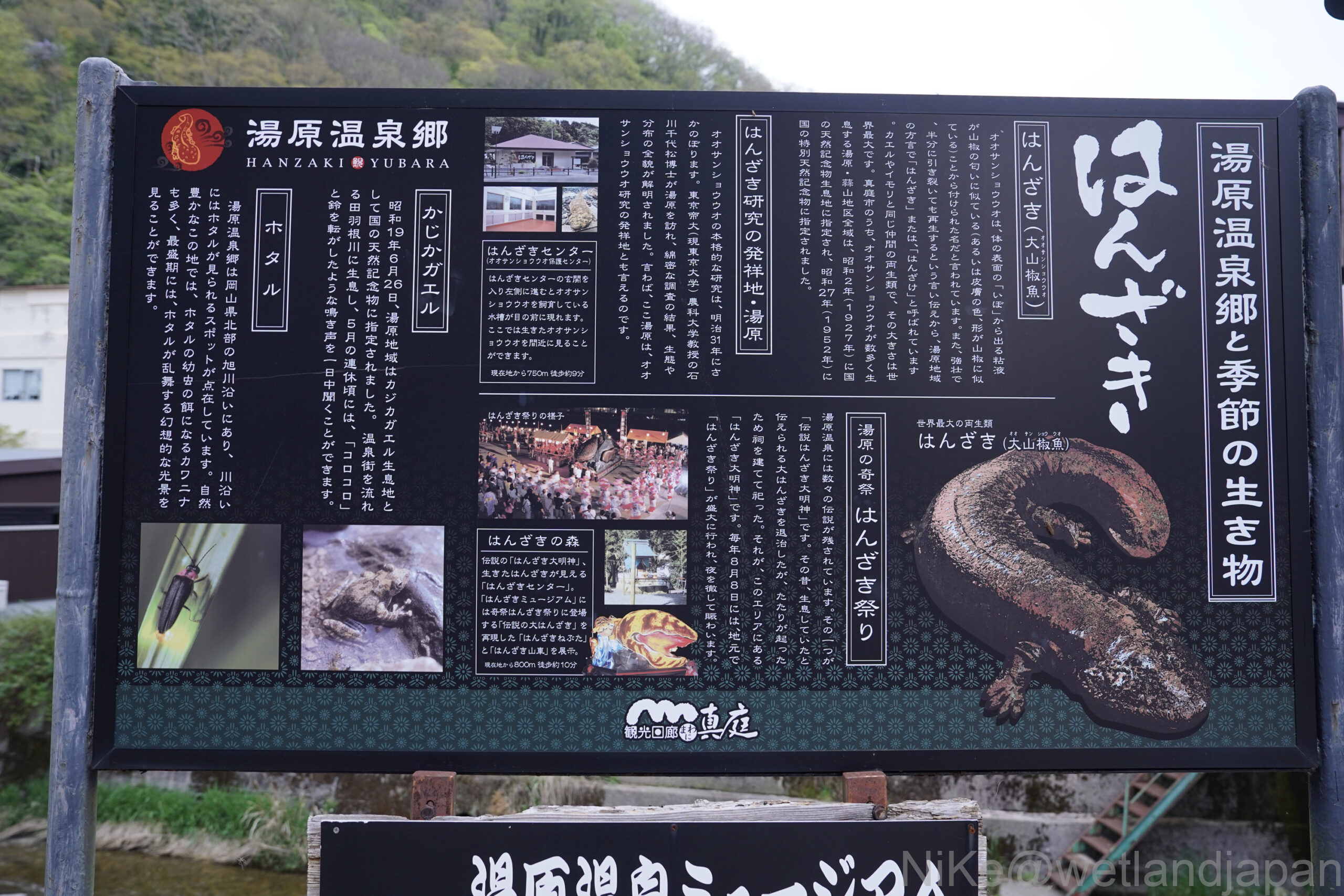
▼Giant salamanders can be found all over the hot spring town, so you can enjoy yourself just by walking around the town.
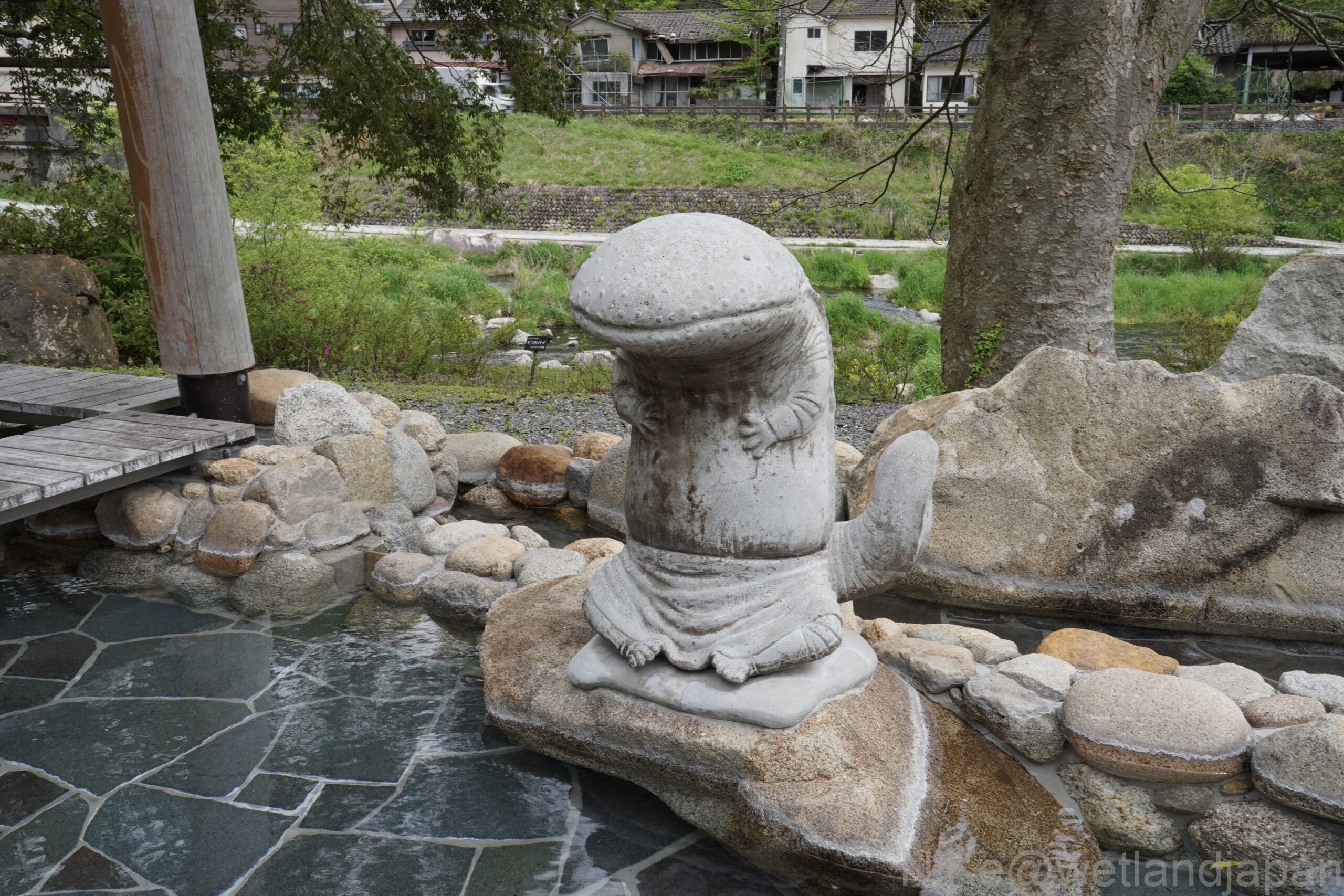
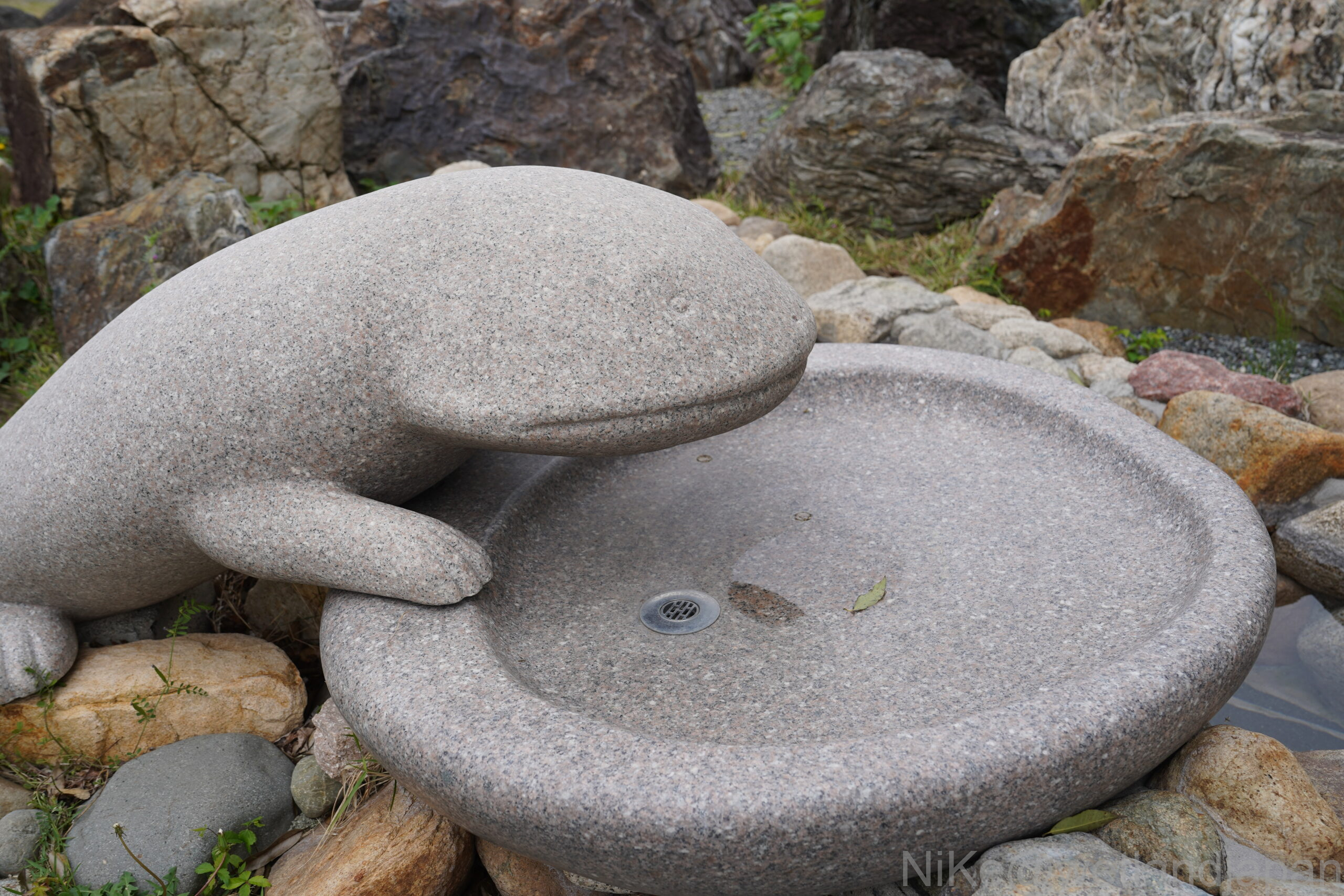
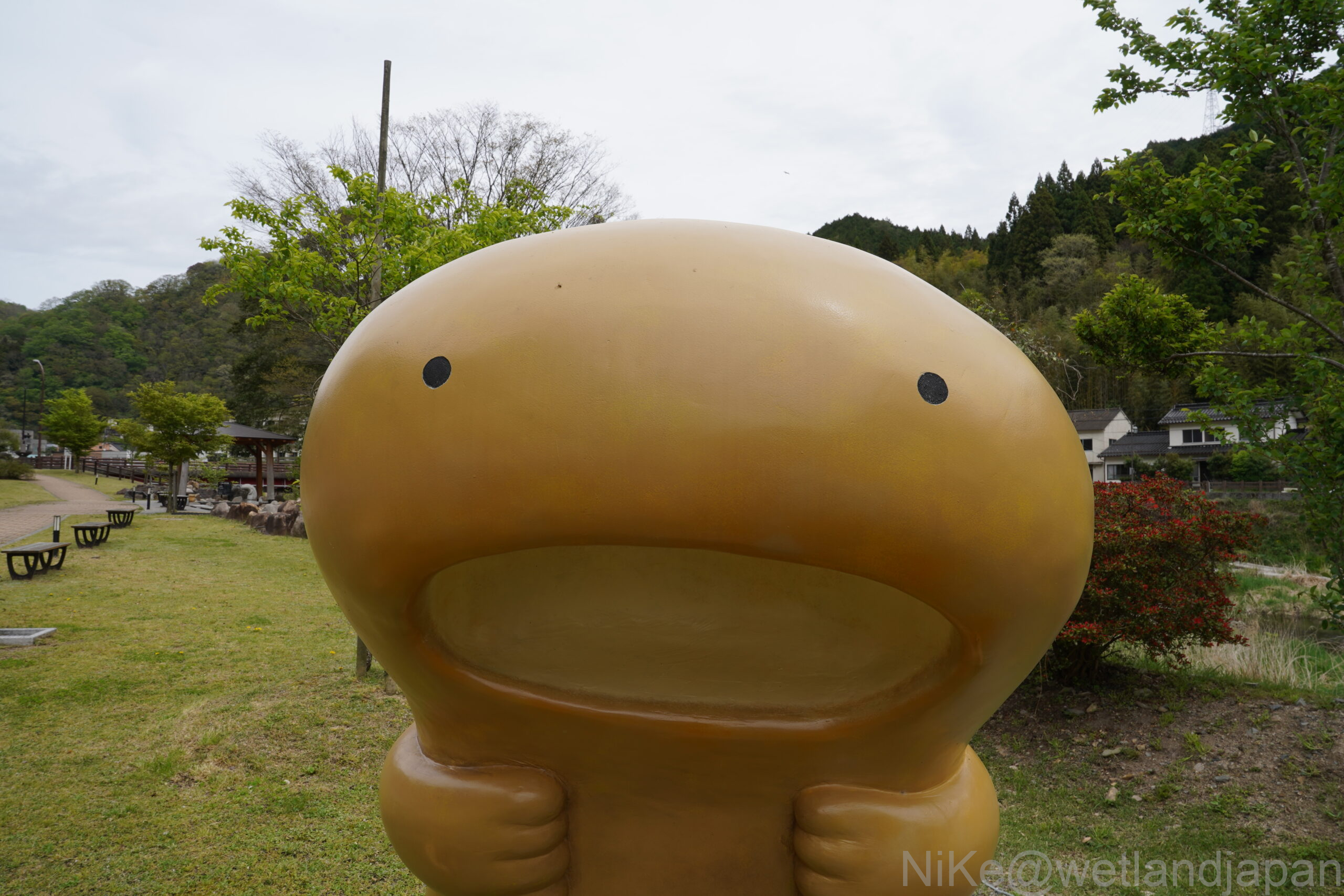
The townscape, which prominently features giant salamanders, is so lively that just visiting it makes you feel like you've met a giant salamander.
During the day, we focused on gathering information and visiting spots where we could make observations.
The Hanzaki Center is within walking distance of the hot spring town, so we narrowed down the spots that have been discovered during research there.

We have selected several potential locations.
Additionally, a local friend told me about some spots where it was said to be.
(I had told them in advance that I was going to look for giant salamanders, so they had gathered information for me. Thank you!)
We were lucky this time that there was no rain just before the event.
The river was crystal clear and you could see into the water.
We visited potential locations and decided on the one we wanted to go to based on proximity to the river, depth, etc.
Then we returned to the hot spring town, ate dinner, and took a nap until night.
I left the inn around 8pm and first went to a spot that a friend had recommended to me.
As I shined the light and stared at the river bottom...!
there was!
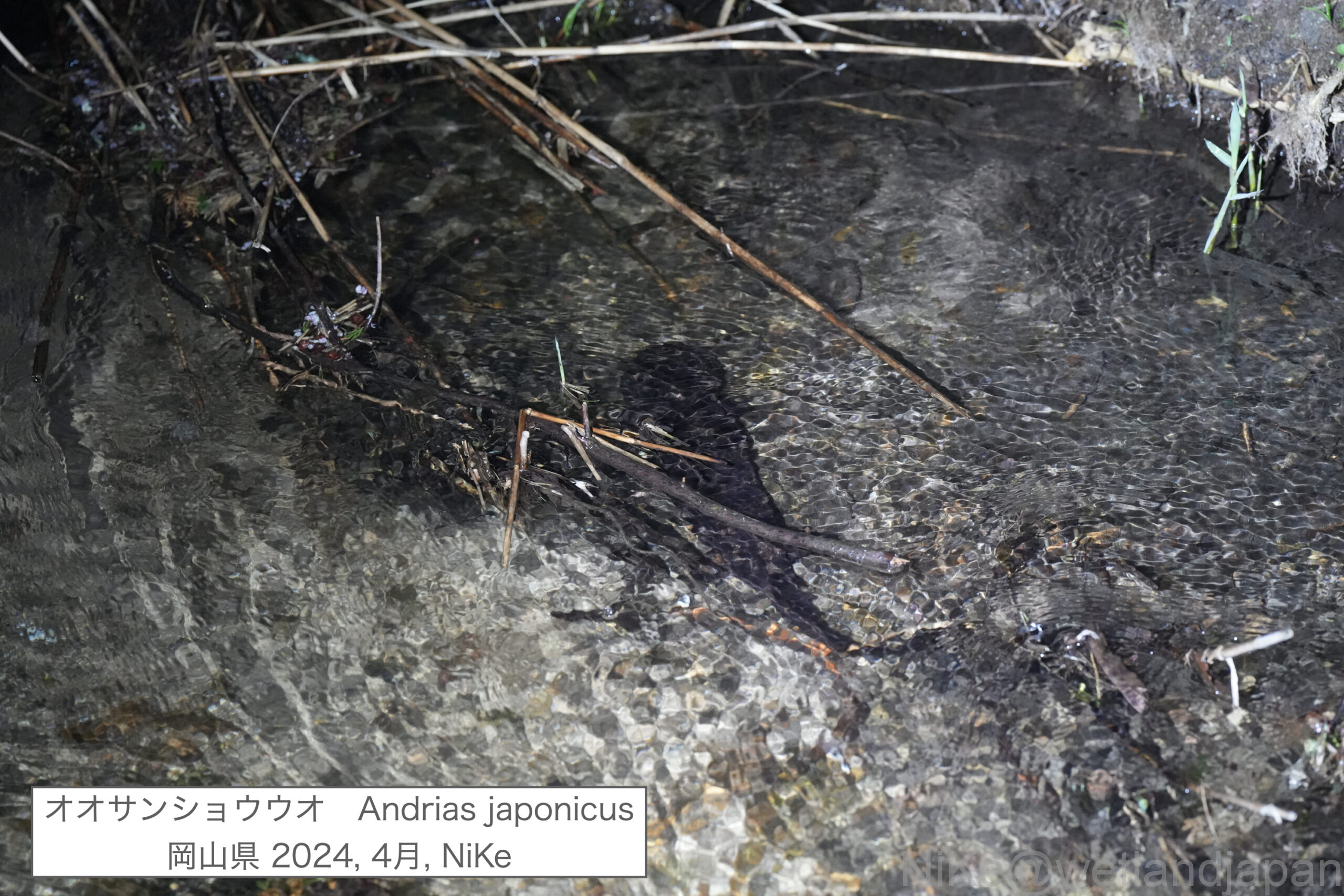
If you wait, it will slowly start to move.
The strong current of the water makes it difficult to take pictures.
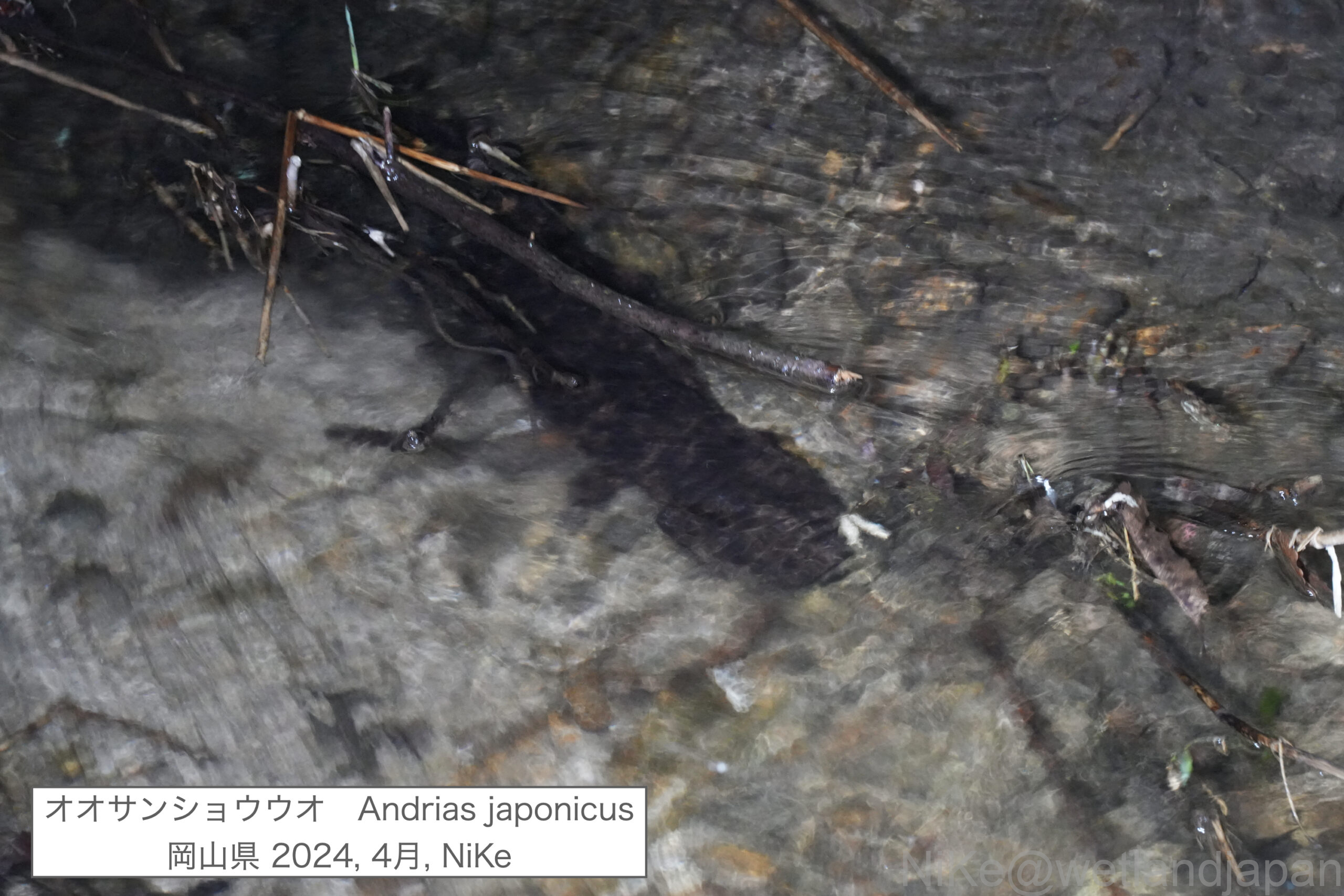
We spotted another one further downstream!
This was deep and the current was fast, so I was barely able to get a photo.
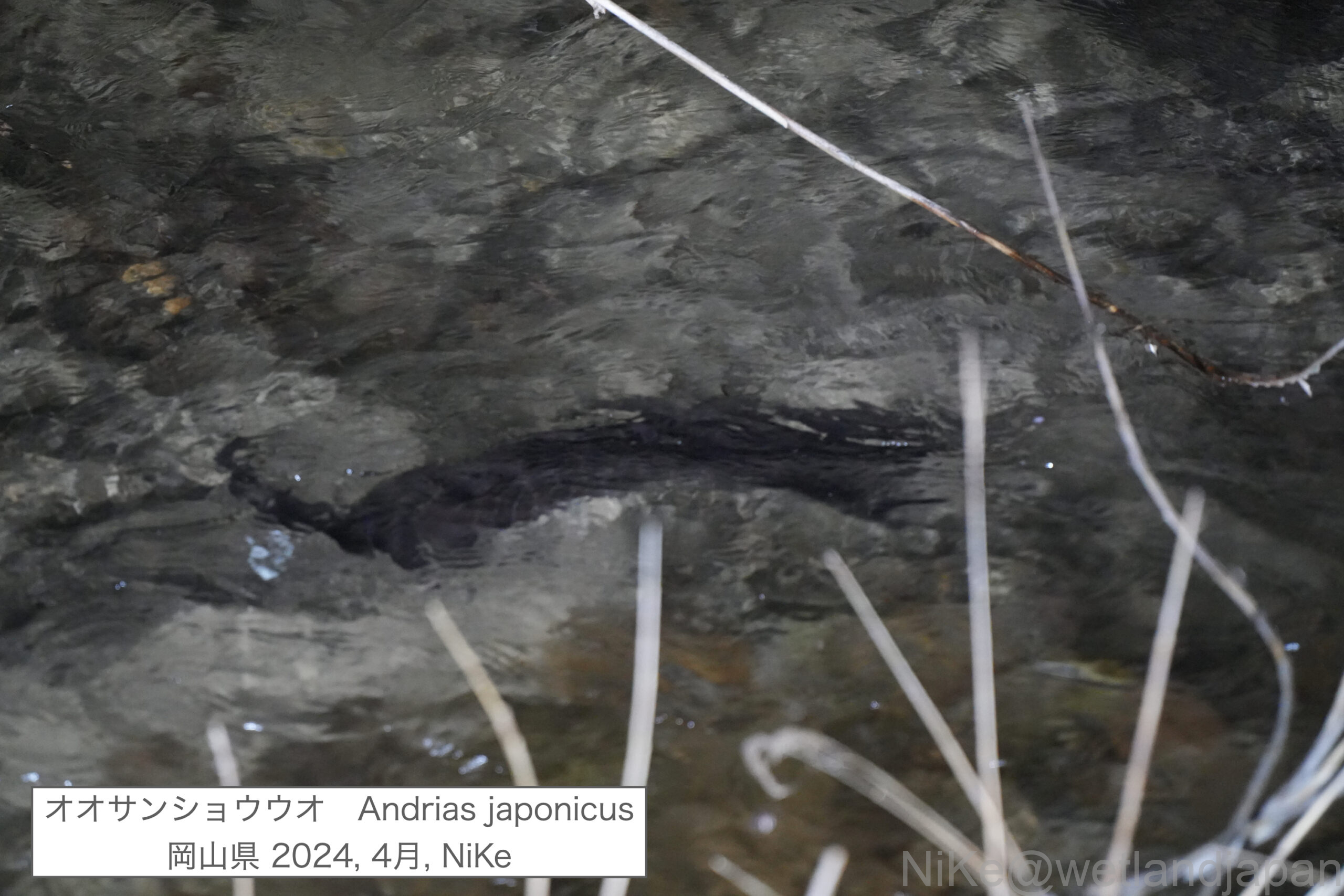
When I returned, I found the specimen in a nice spot!
I'll focus on this and take the picture!
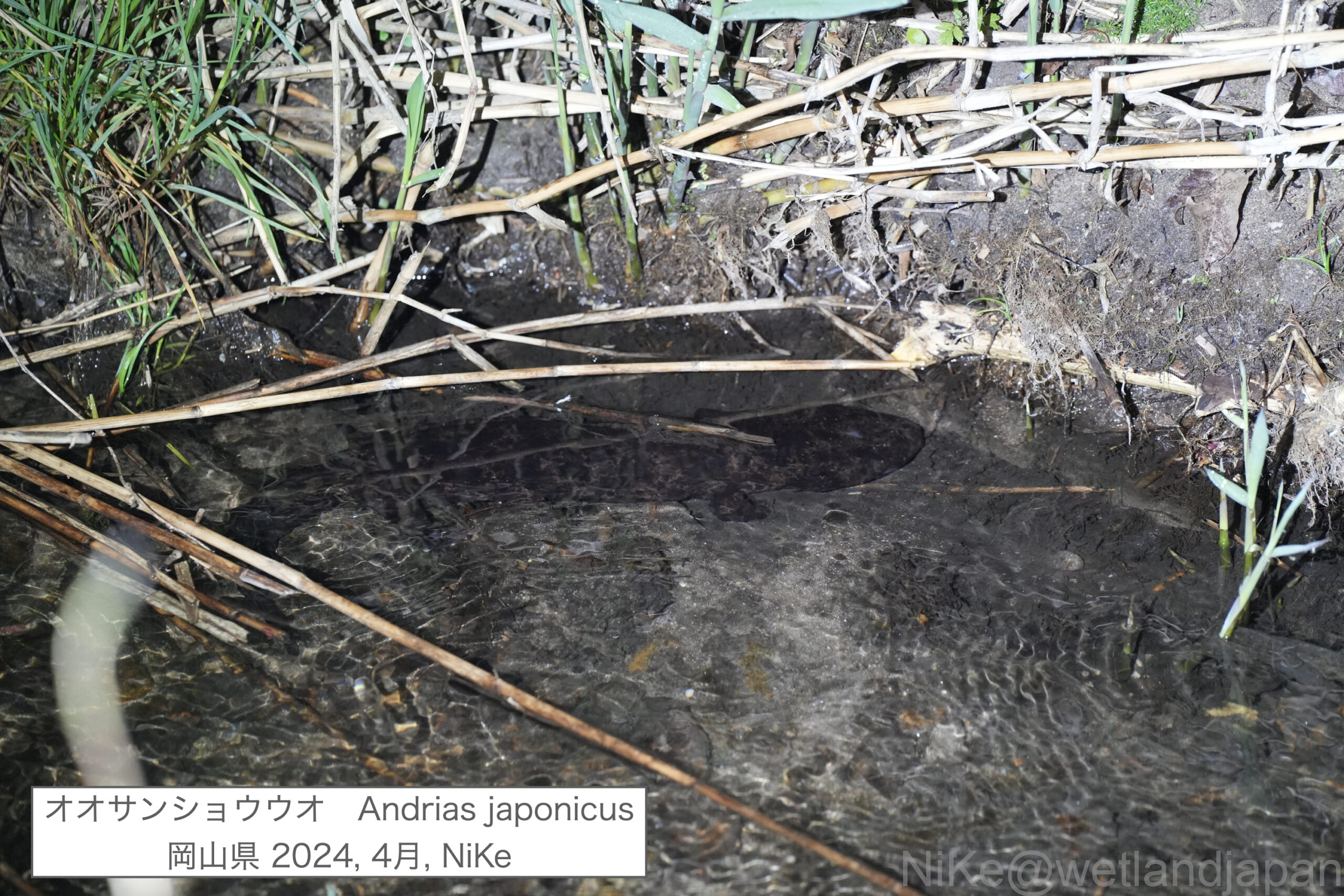
He turned towards me!
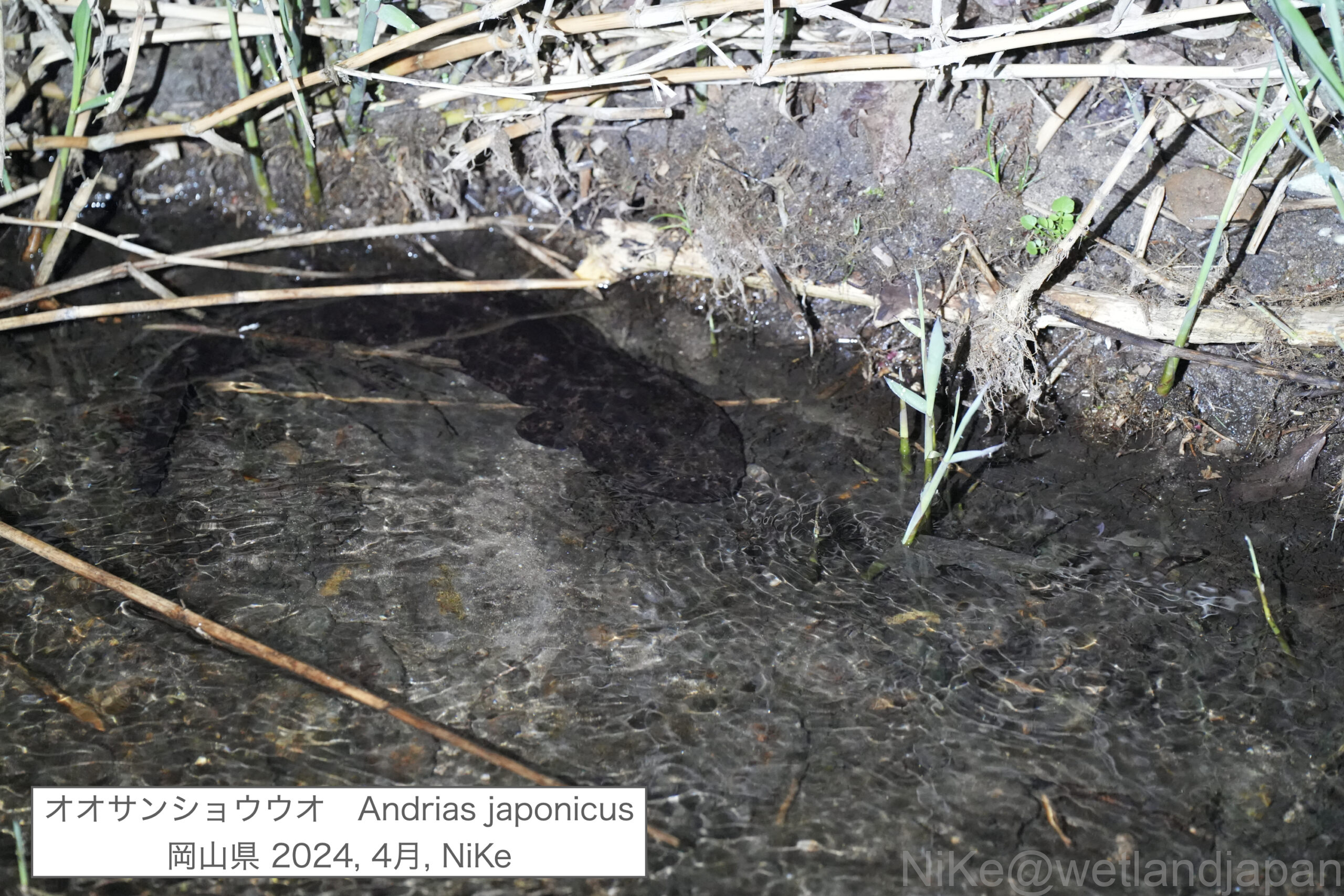
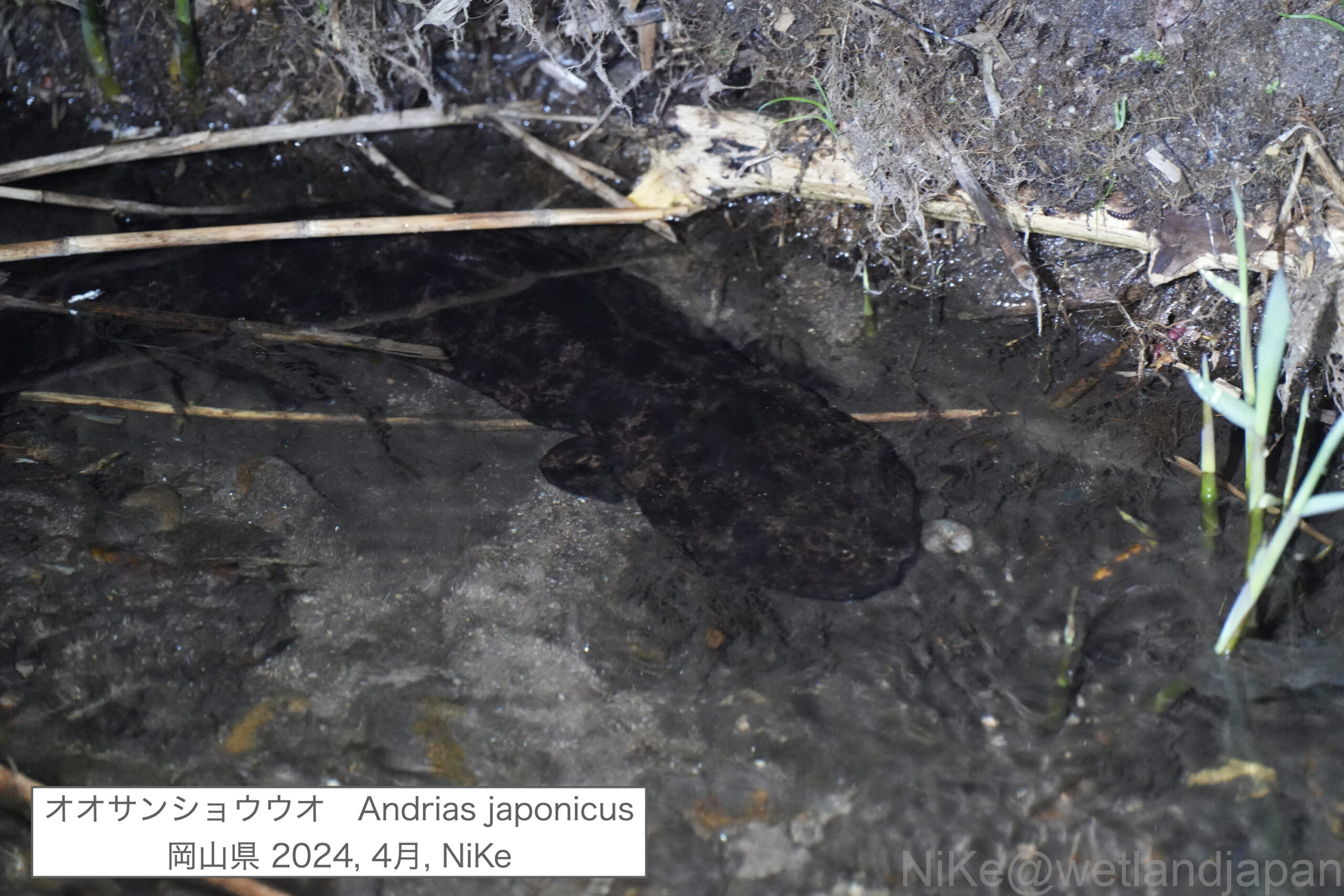
I was able to see the little eyes!
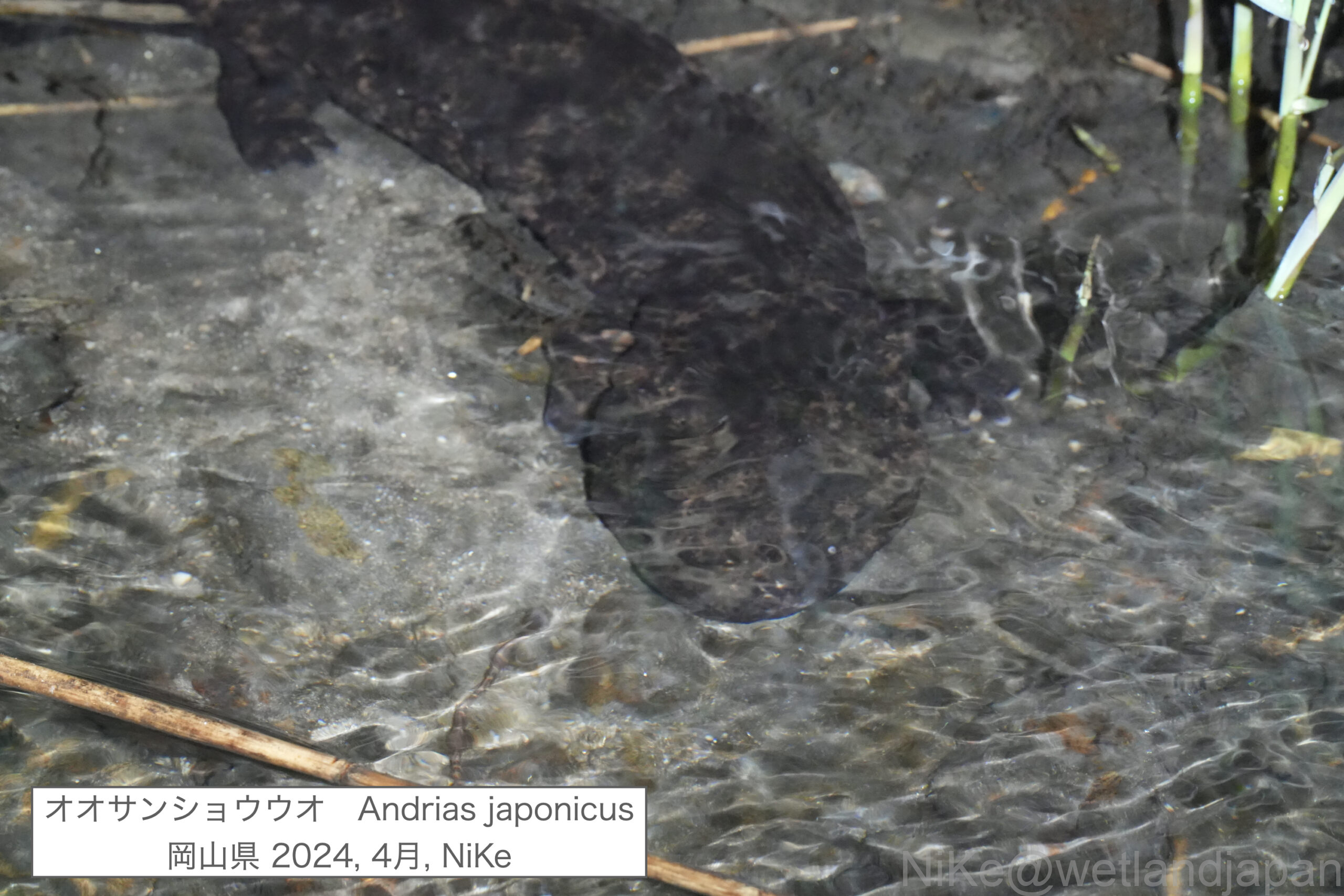
I was able to take some great photos here, so I thanked my friend and headed to the next spot.
You'll find it soon at the next spot!
The current here is quite strong, making it difficult to take pictures.
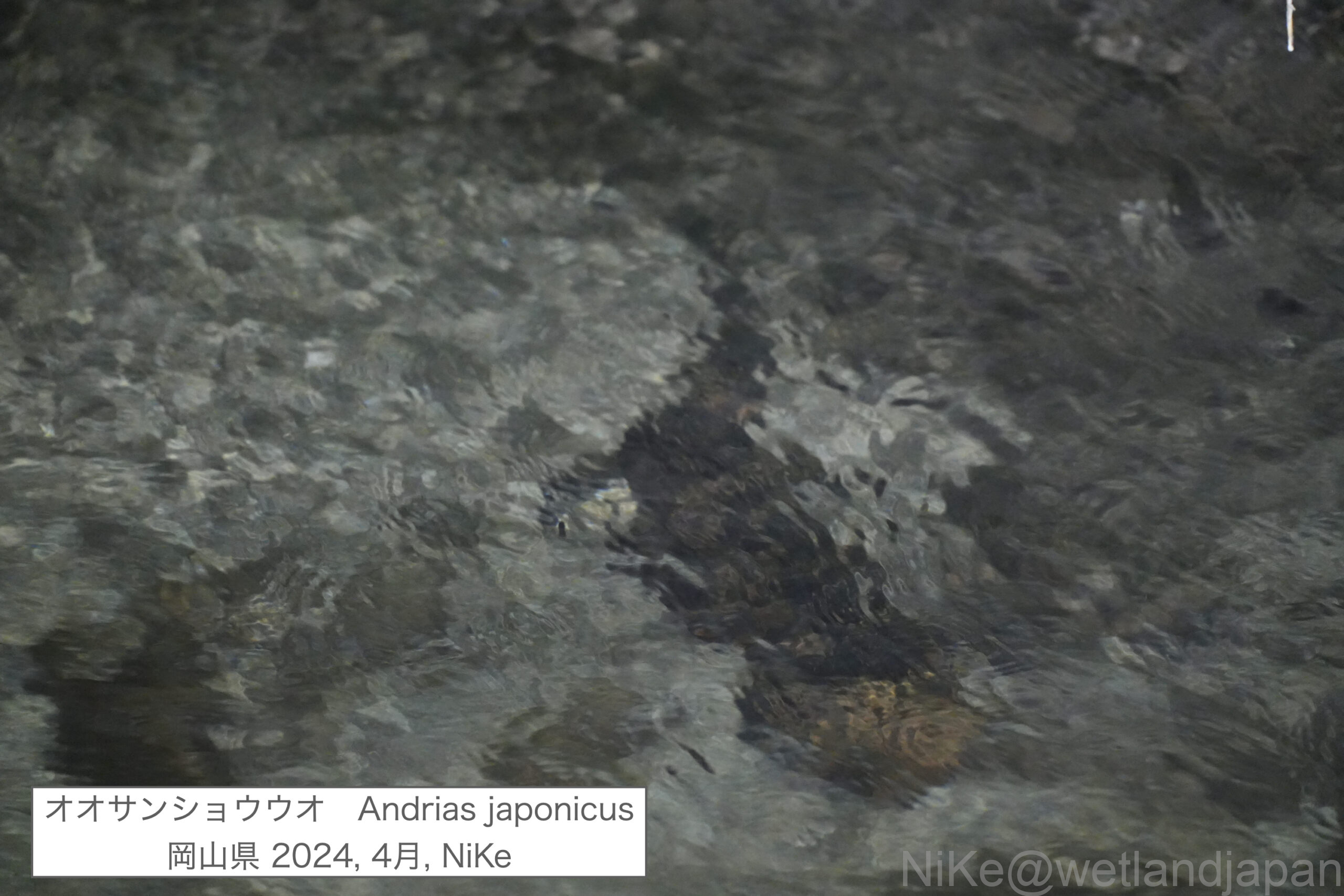
Going further, I found another one!
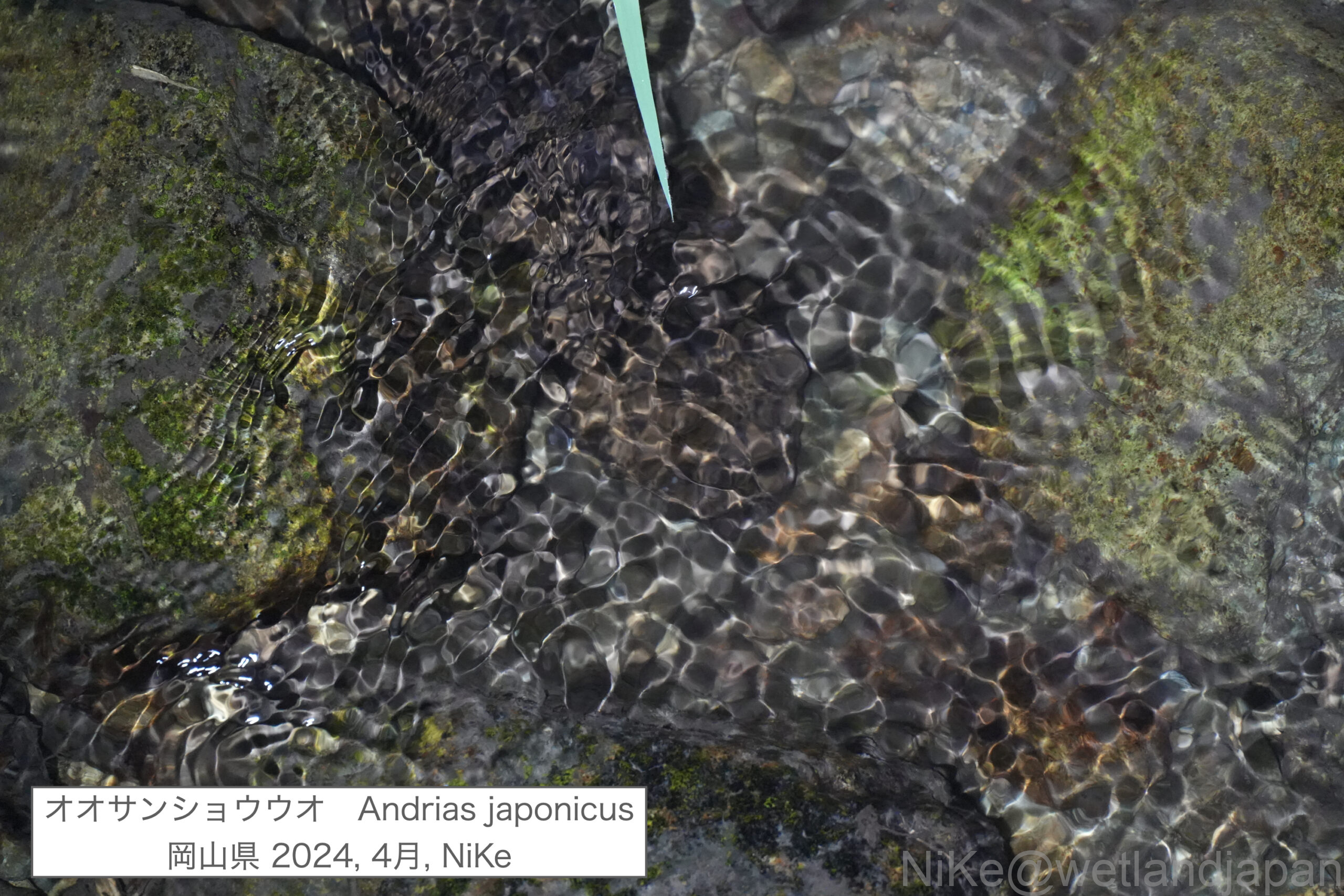
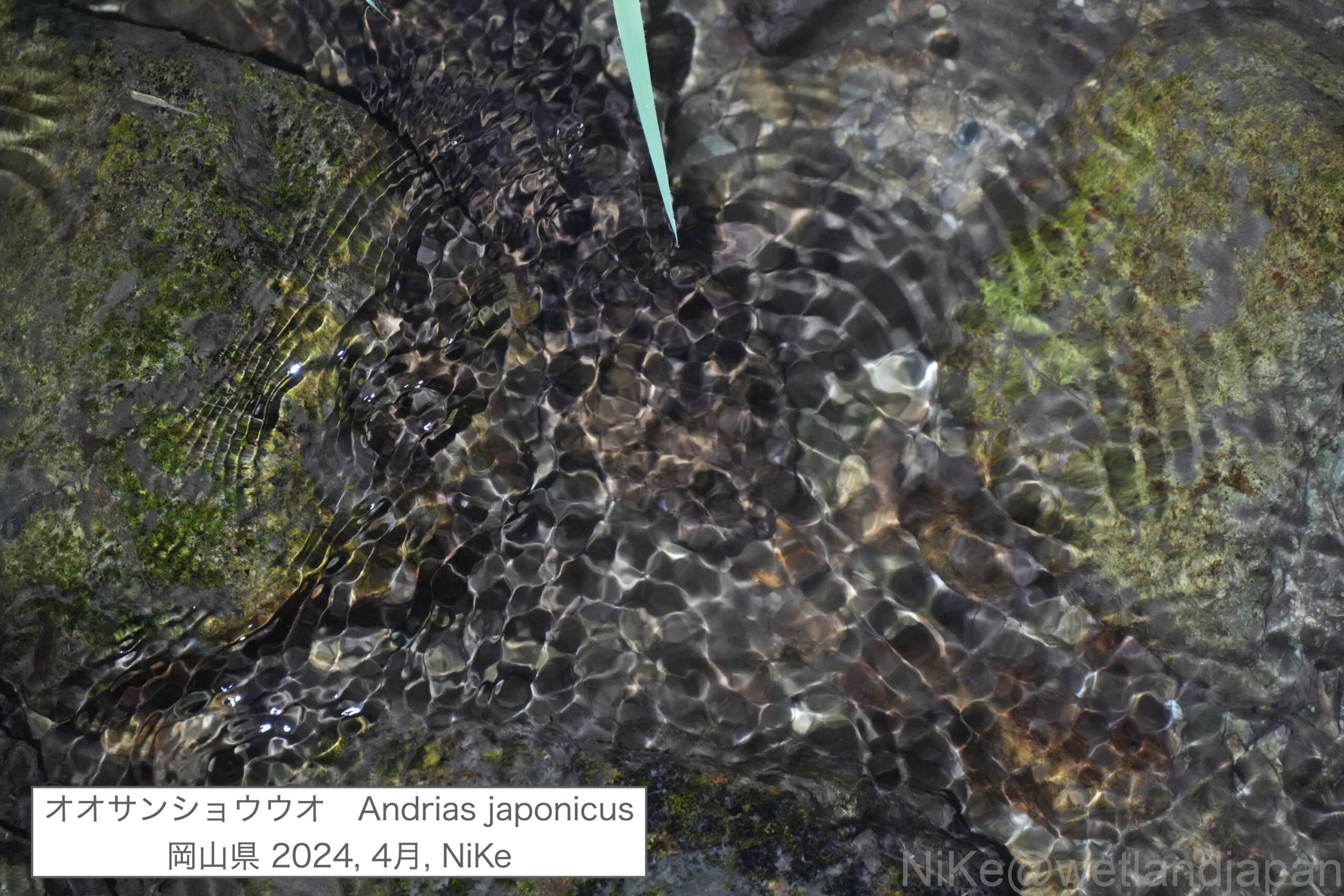
I was able to take some great photos!

I'm thankful there's little current!
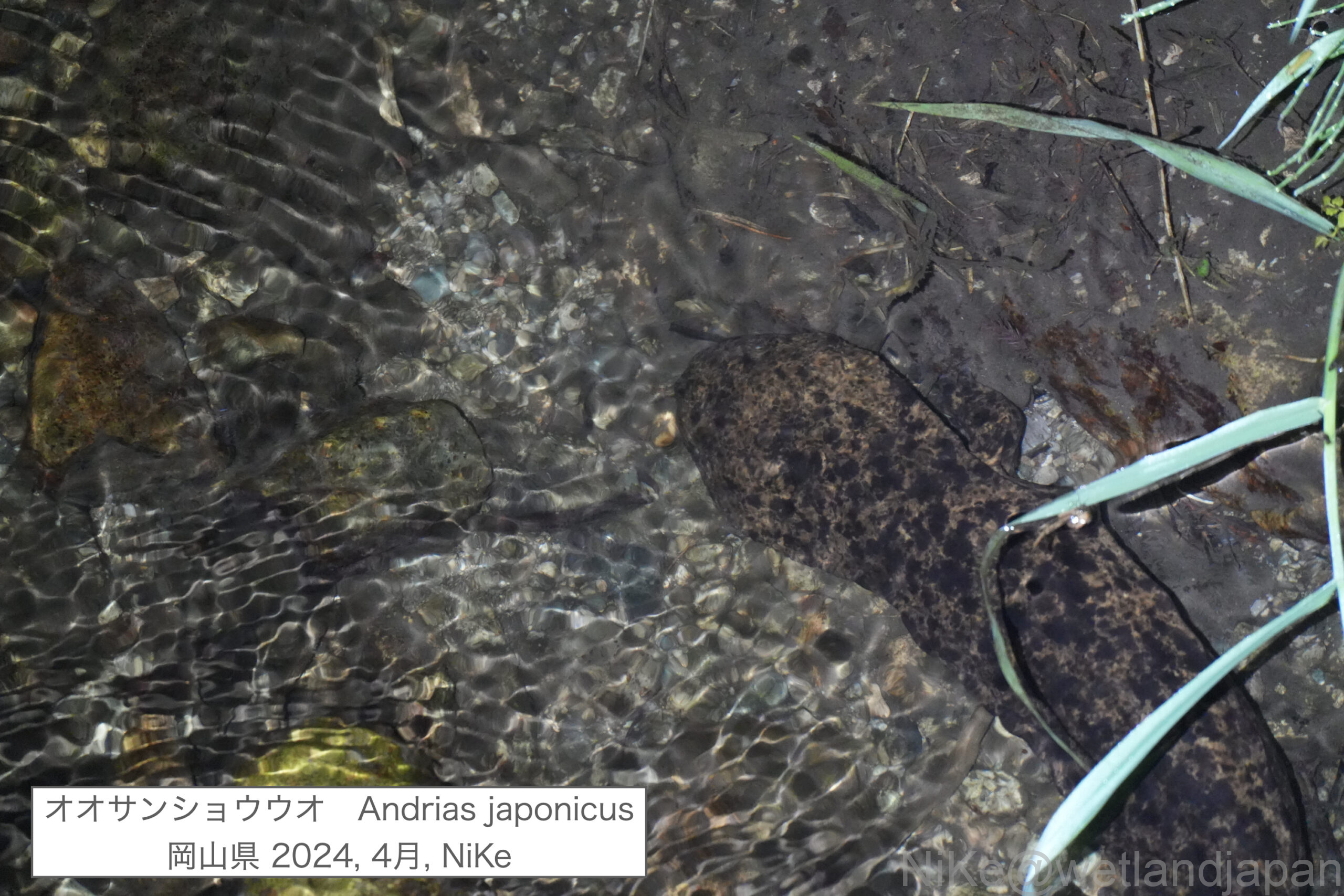
It popped out a little above the water.
The texture of the skin was also captured well.
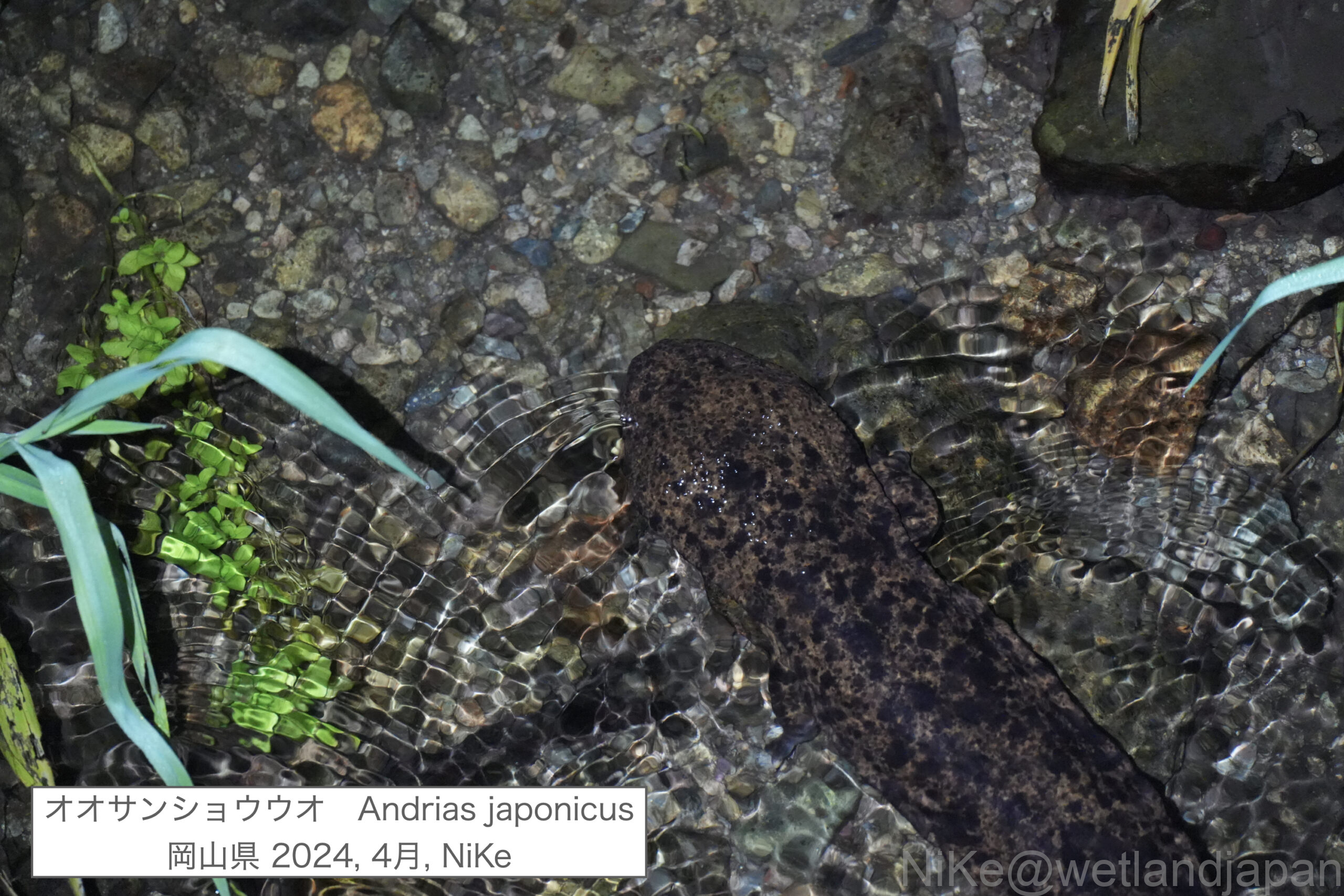
I was able to photograph a total of four animals, so I returned to the inn feeling refreshed.
How do you meet?
The only thing we can do is carefully study the rivers where they live.
They seem to hide in their nests during the day, so their main search is at night.
If you stand still it's hard to distinguish it from the riverbed or the trees.
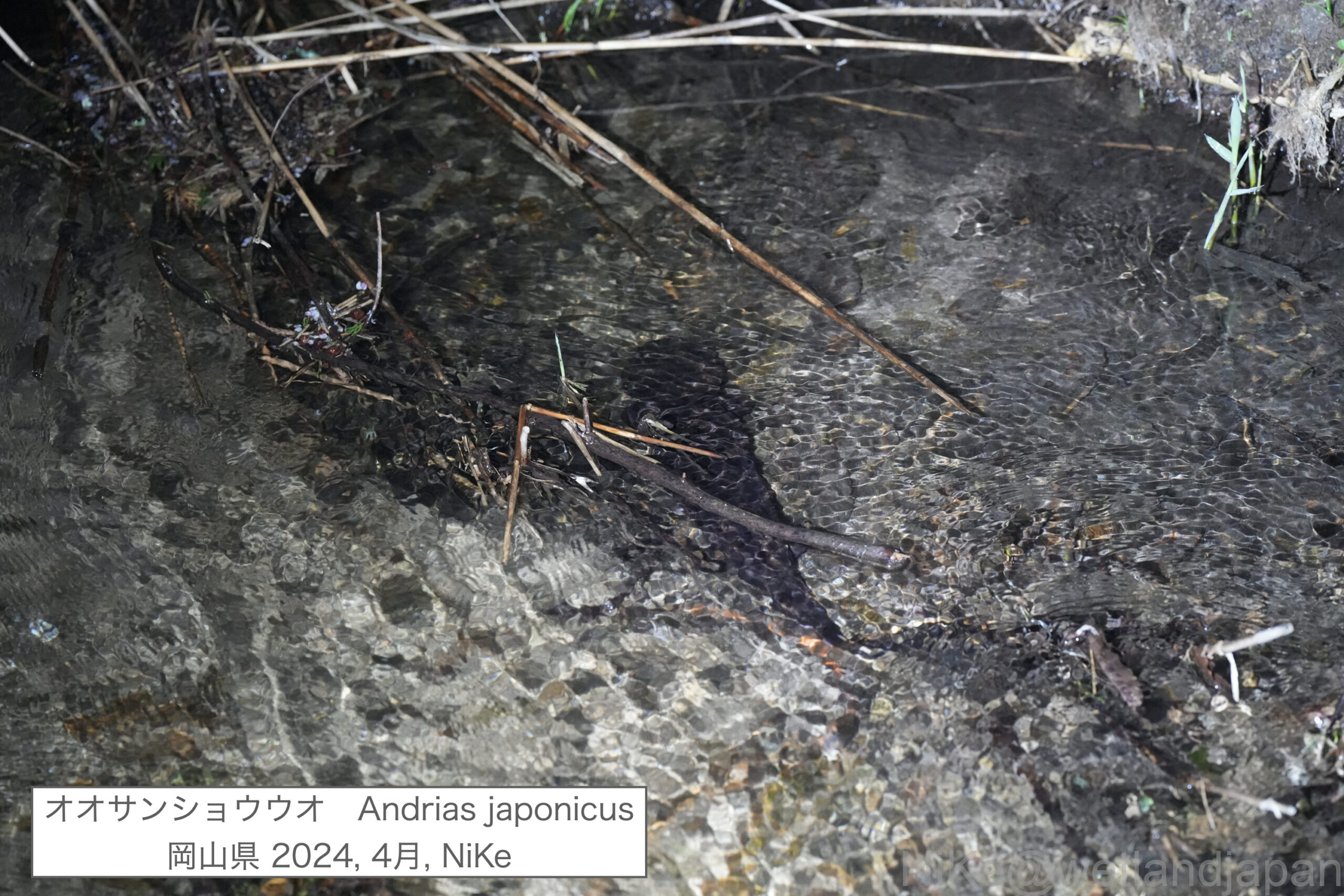
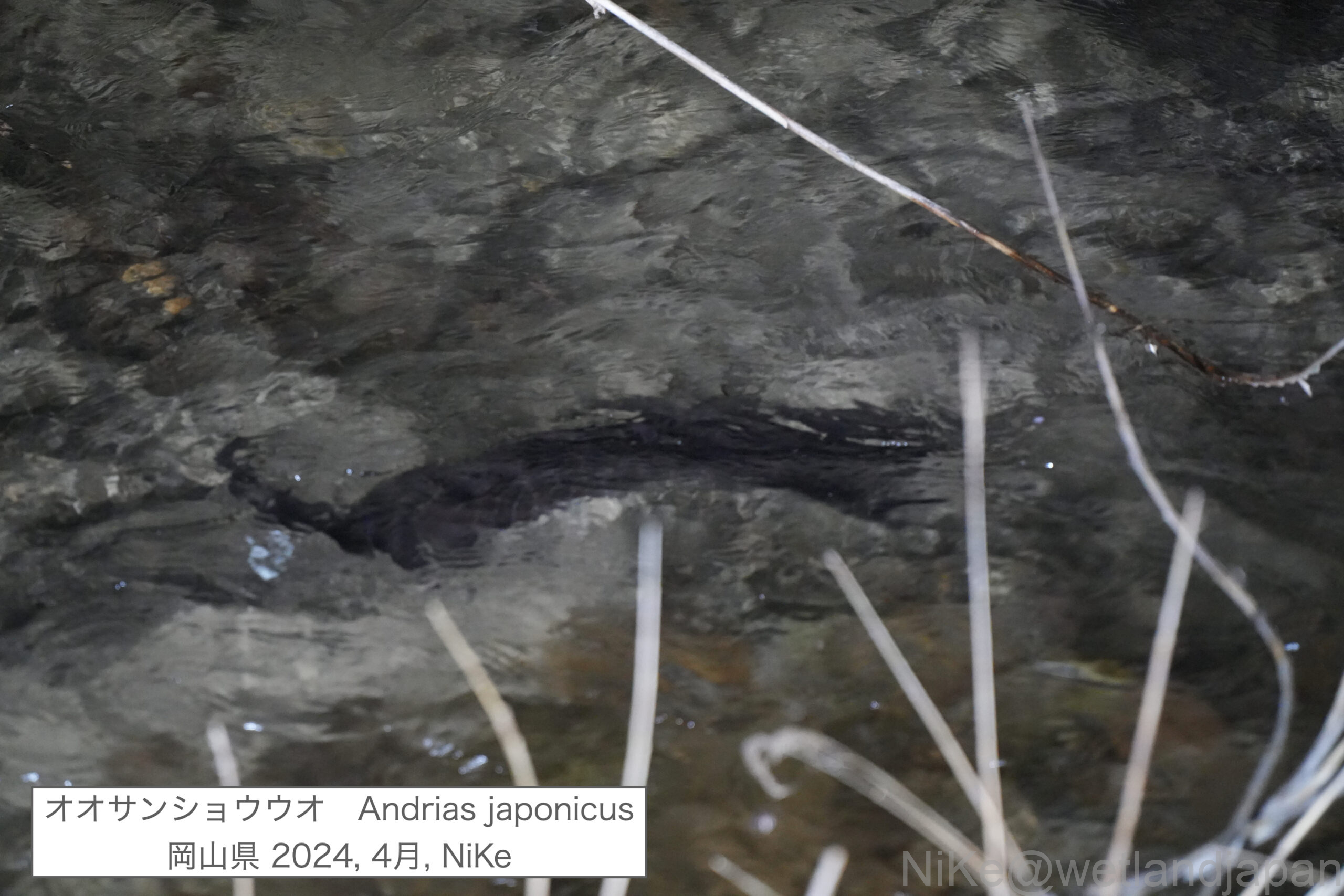
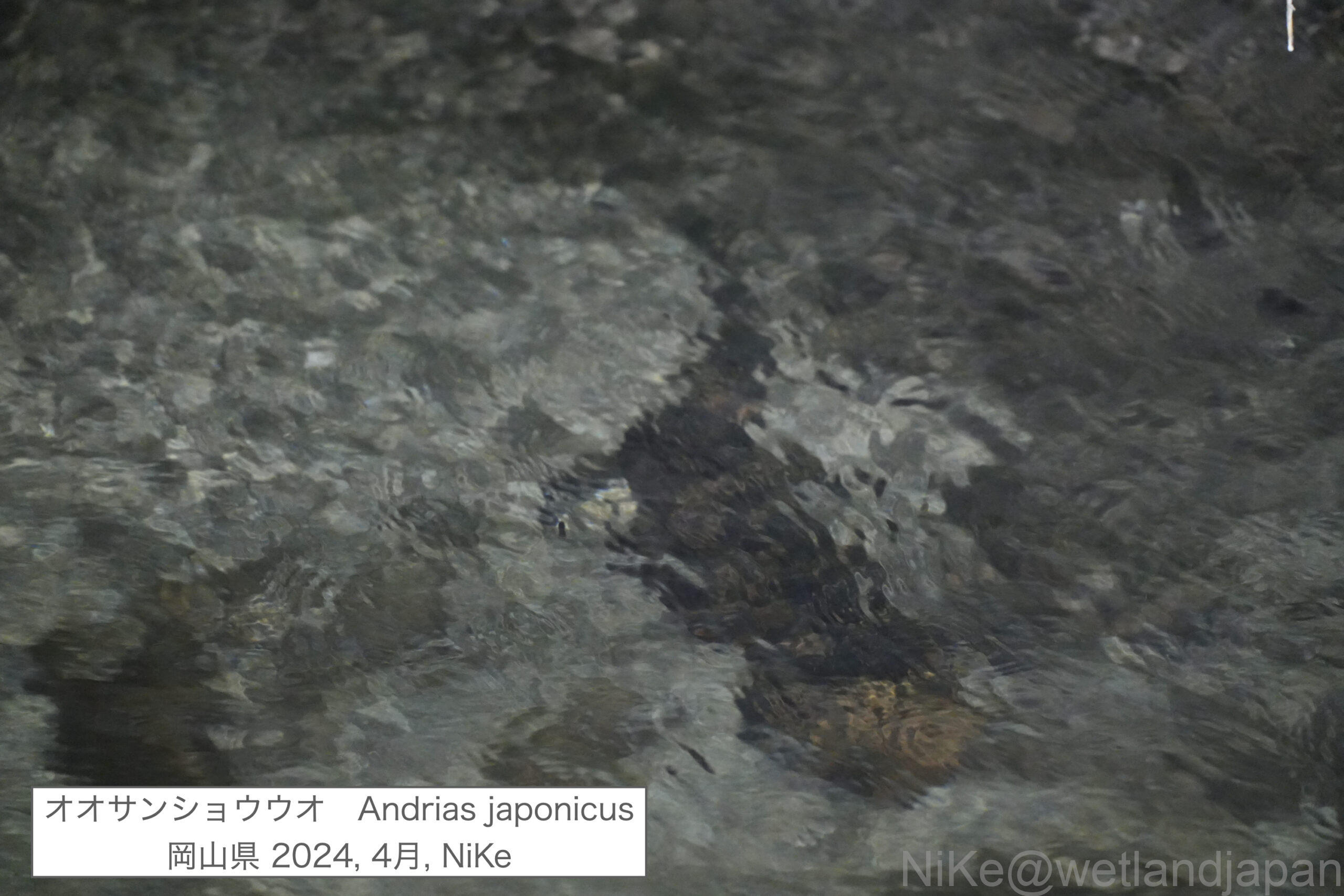

You'll have to spend the night staring intently at the river in search of them.
The nights in April are cold, so you will need to take measures to protect yourself from the cold.
It's dangerous to explore the riverside at night for the first time, so it was good that I had done some preliminary scouting.
By doing some preliminary scouting, I was able to concentrate on looking for giant salamanders.
Also, since they live in flowing rivers, it will be difficult to observe them if the water becomes muddy due to rain or other reasons.
Apparently, giant salamanders can be swept away when the water current is strong.
photograph
Since you will be exploring at night, you will want a light with at least 500 lumens.
If you're in a flowing river, it can be hard to see them without a strong light.
Since the river is often quite far away, you'll need a telephoto lens of at least 200 mm.
It's good to have a bright lens.
They move slowly so it wasn't difficult to photograph them once I spotted them.
If you don't mind seeing them in the wild, you can also see them at zoos, Hanzaki Centers, and Hanzaki Nature Museums.
Photo collection
▼Individual from Okayama.


Mizuho Salmon Nature Museum
Mizuho Hanzake Nature Museum is an exhibition facility in Shimane Prefecture specializing in giant salamanders.
You can learn various facts about giant salamanders.
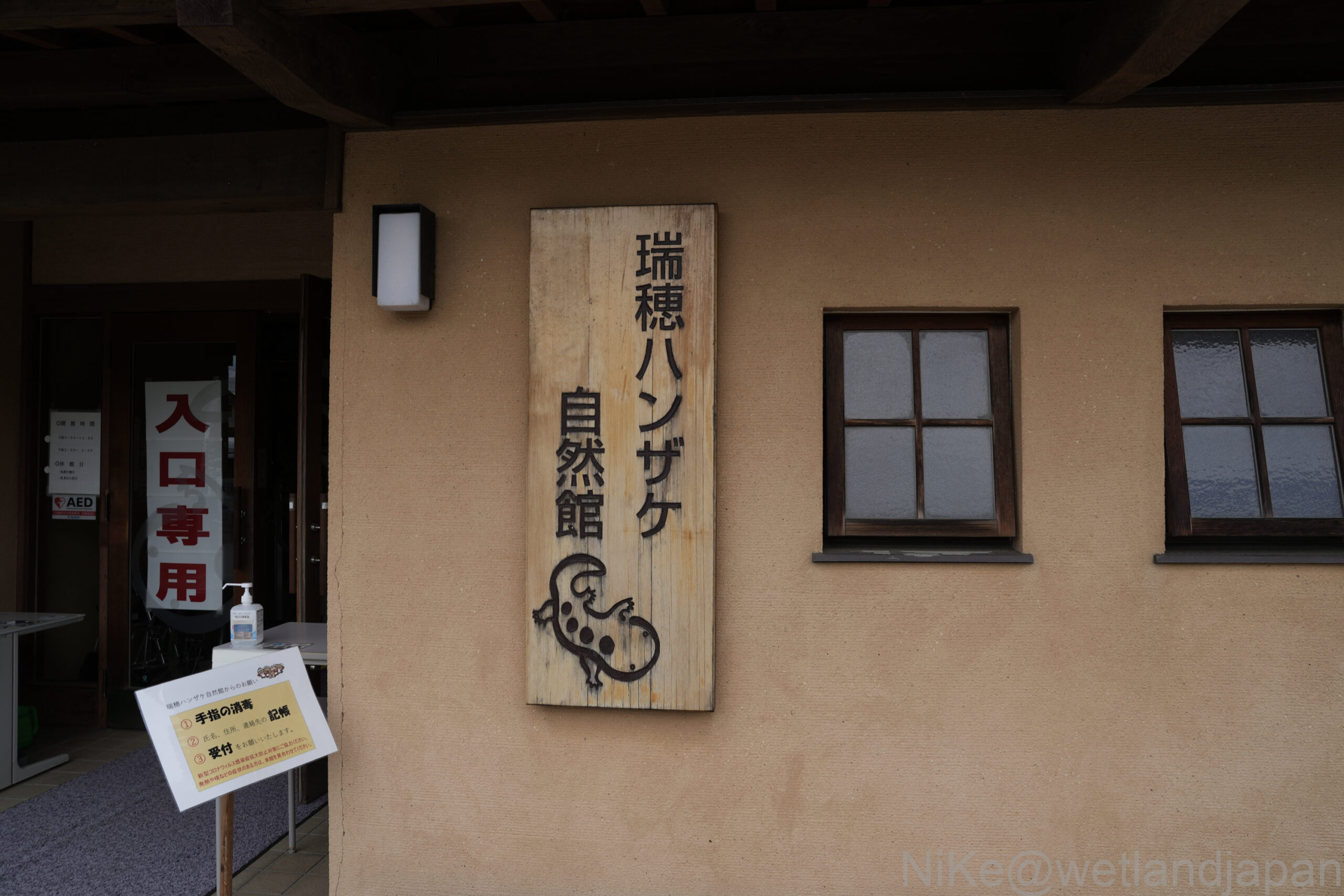
Of course, you can also see giant salamanders.
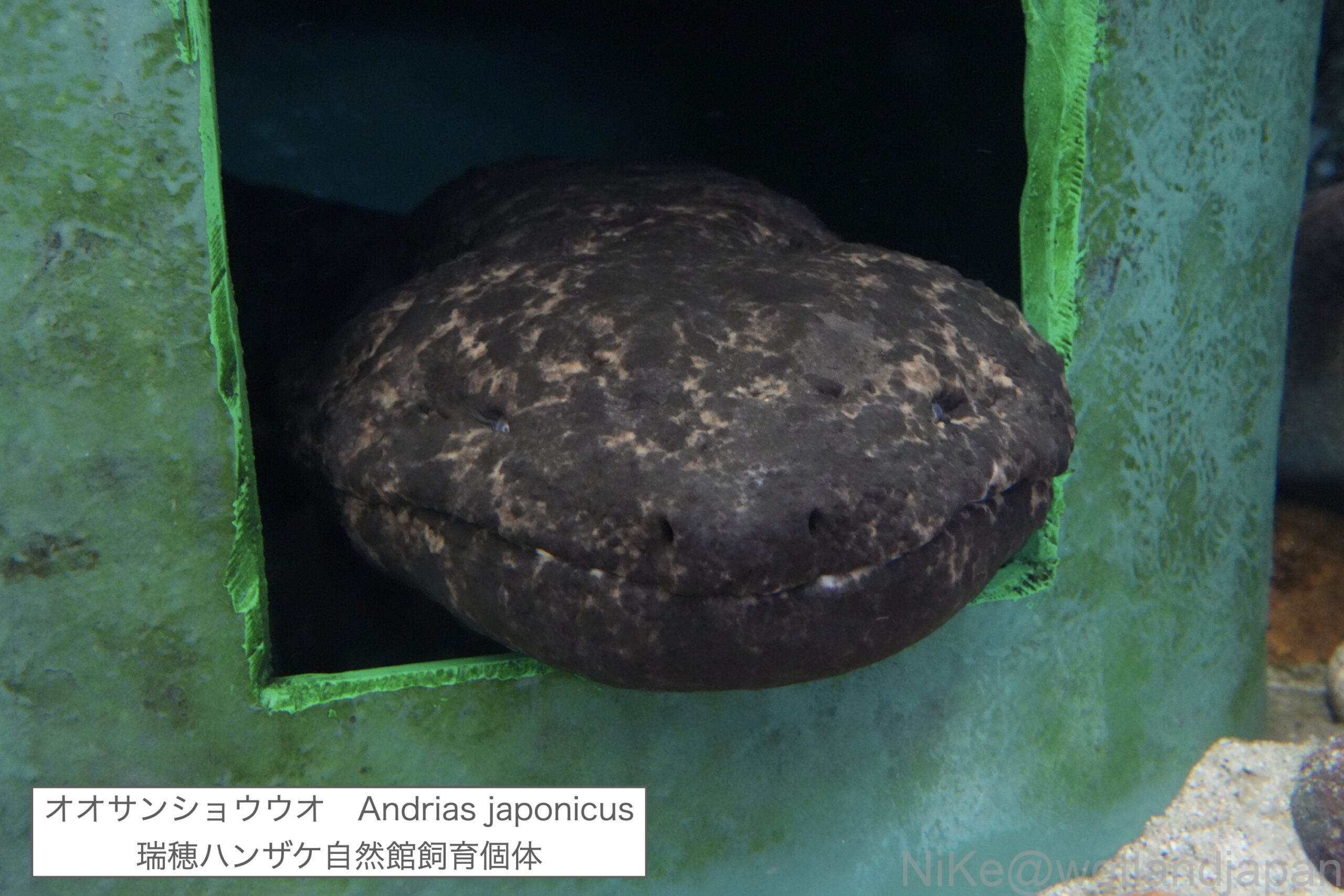
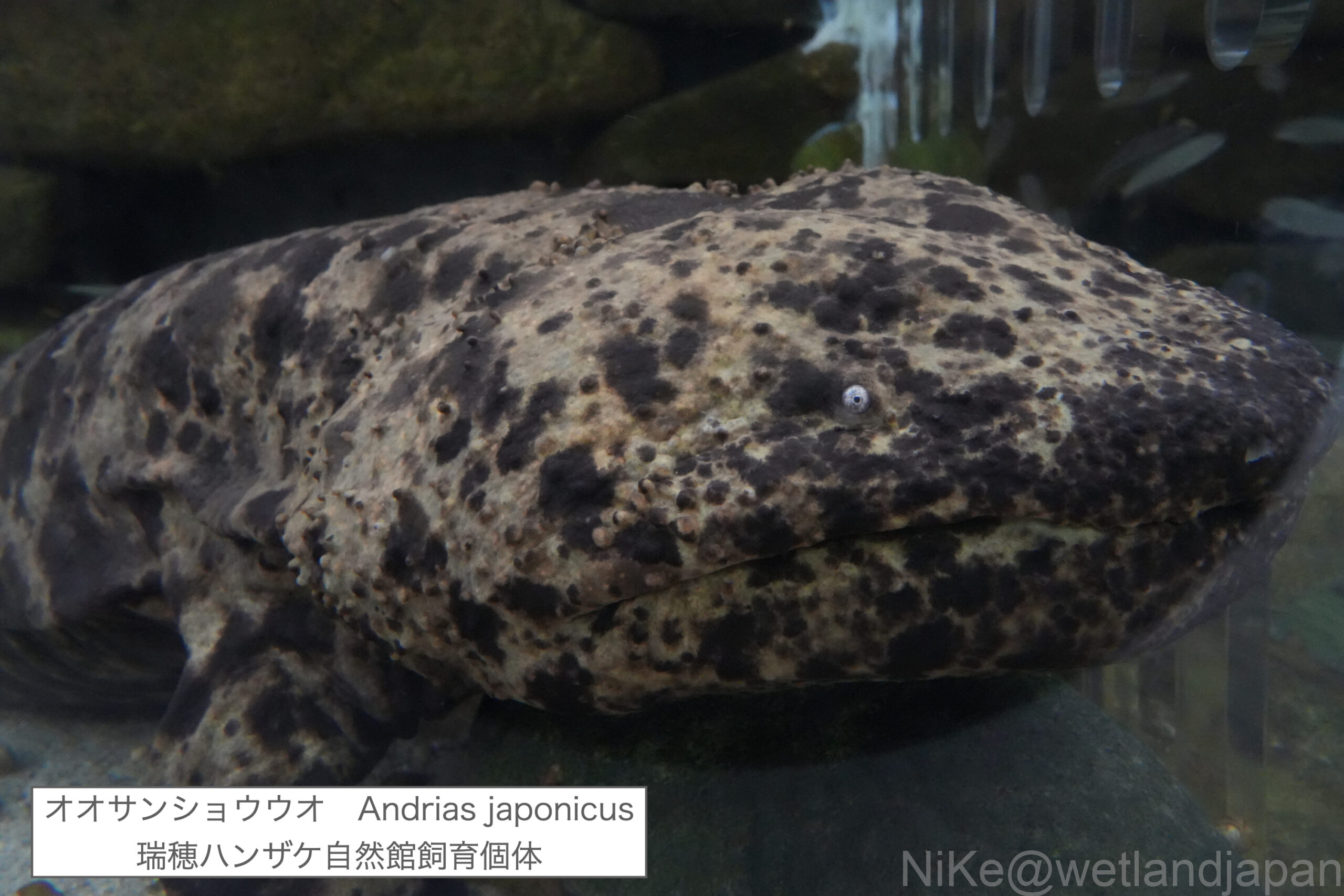
Juveniles are also on display.
It already has the face of a giant salamander.
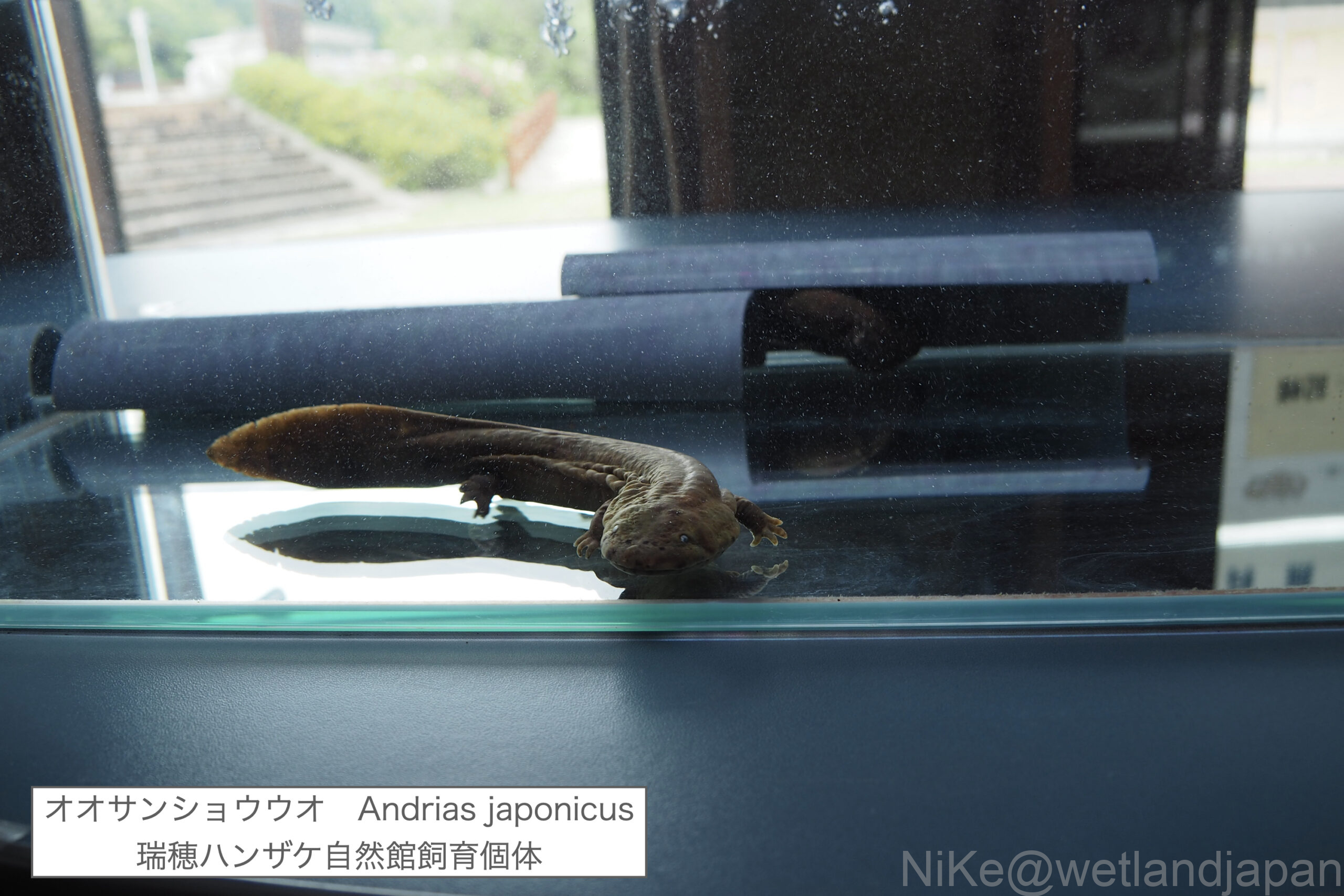
Hanzaki Center
A conservation center in Yubara City, Okayama Prefecture.
It is within walking distance from Yubara Onsen town and is recommended if you want to gather information on giant salamanders.
Of course, the giant salamanders are kept in captivity, so even if you can't see them in the wild, you can see them here.

